
For #TipTuesday this week, we go over how to set up store visits as a conversion goal in Google Analytics 📈 so you can see how your PPC investment equates to more foot traffic in your store! 👣

To do this, there are some requirements ⚠️:
🔸 You must have your Google Ads + Analytics accounts linked. 🔗
🔸 You must have Google My Business listings for 2+ locations. 📍

Here’s how to set it up 🛠️:
Sign in to your Google Analytics account and select the property that you want to track. 🖱️

Once you’ve selected a property, click on the admin tab on the left. After this, click on “Tracking Info” and “Data Collection”. 📊

Once you’ve clicked this, you should see a message to activate Google Signals! Simply follow the step-by-step instructions on your screen to set it up. 🖥️

Once this is completed, you should be good to go! Sometimes, it takes a few days for the “Store Visits” conversion goal to show up and up to 60 days to start seeing conversions. 😱
More reason to get it set up ASAP! 🙌

For all of your PPC advertising needs, Konstruct Digital is here to help! 👏
#KonstructDigital #GrowYourBusiness #PPC
#GoogleAds #GoogleSignals
For many years, the existence of the so-called ‘duplicate content penalty’ has been a hot topic of debate, stirring anxiety among marketers.
The short answer is: no, there are typically no ‘penalties’ for duplicate content.
However, having duplicate content can hurt your SEO. So it doesn’t mean you shouldn’t pay attention to best practices in dealing with duplicate content.
By putting in the extra effort to avoid duplicate content, you will end up creating a better experience for your users (and search engines) in the process.
What is duplicate content?

Google defines duplicate content as substantive blocks of content either within your own domain or across other domains that are identical or only have minor differences.
To be clear, translations of the same page or article and quote-sized snippets of texts from other sources are not technically duplicate content.
For the most part, duplicate content happens accidentally, either due to technical issues on the same website or because of manual duplication. External content duplication can also occur if your content is being published on a different website.
Does Google penalize you for duplicate content?

Yes, ok, a Google duplicate content penalty does exist.
The good news is that it only affects search engine rankings for regular sites in rare cases. Copied or scraped content on a page might trigger a review by one of Google’s human reviewers.
If the reviewer determines that the page/site violates Google’s Webmaster Guidelines and the intent of the duplicate content is to manipulate search engine results, Google will make the appropriate adjustments (the dreaded penalty), resulting in a reduced ranking of the site or complete removal from the Google index and search engine results.
The takeaway is: don’t steal content. Instead, create great, unique content that offers value to your audience.
How duplicate content hurts your SEO

While manual actions due to duplicate content are rare, duplicate pages might confuse search engines and your users, which results in poor site performance.
For example, if you have two or more pages with duplicate content matter, the search engine will struggle to figure out which page is the best result, as multiple pages from the same site with the same content will not be shown in the search results.
The result of this search engine confusion is that all pages with similar content lose visibility. The same issue happens for backlinks – other websites might link to different pages on your site with duplicate content, and since backlinks are important ranking signals, this adds to the problem.
Additionally, having many web pages with the same content burns Google’s crawl budget for your site and could lead to delayed indexing of pages on your site.
Find duplicate content

If you’re wondering right now whether you have duplicate content issues on your site, there are a number of ways to check.
You can do a manual check for duplicated content by taking a block of text from a couple of your primary pages, putting it in quotes, and doing a Google search.
Here’s the formula: “Site: [website URL] [content you’re searching for]”
If you have more than one version show up in the search results, you will have to take a closer look at what causes the duplication issue. You can also check in Google Search Console if the number of pages indexed line up with the number of pages on your site.
There are also a number of duplicate content checker tools available such as Siteliner, that offer a free scanning of your site once per month and give a thorough overview of any duplicate content issues on your site.
Internal duplicate content issues

Common sources of duplicate content within your site can often be fixed by going the extra mile with technical SEO. Here are a few common examples.
Product descriptions
For ecommerce companies, having duplicates of the exact same page content can be a big headache. As a general rule of thumb, avoid creating multiple versions of your pages for the same product and create your own awesome product descriptions that speak to your particular target customer.
URL parameters
If your site uses URL parameters such as for tracking or sorting. These are commonly found on ecommerce sites or via search functions. It’s best practice to ensure your site doesn’t create multiple URLs for all product variations.
Different URL versions of your site
You may have different versions of your sites live and visible to search engines, which causes duplicate content issues, as search engines treat them as duplicates of your site.
- HTTP vs HTTPS
- WWW vs non-WWW
- Trailing slash after the domain extension (.com/ and .com)
Depending on the specific internal duplicate content issue, you can fix it by deleting or consolidating pages with duplicate content.
How?
You can use meta robots with the values “noindex, follow” to filter out certain pages from Google’s index, set up a 301-redirect to the preferred version of your site, or use a canonical URL (rel=”canonical”) to indicate to search engines which version of the content is the main page and preferred domain.
External duplicate content issues

Sometimes your original content is so amazing that it gets duplicated on other sites!
Scraped content is when other websites steal your content and repost it on their site in the hopes of increasing their website traffic.
Copyscape is a great tool you can use to check if your content has been scraped.
Although scraped content rarely gets better search rankings than original content, it is a good idea to file a complaint under the Digital Millennium Copyright Act.
Syndicated content is different.
Here, your original content gets published on another website with your permission.
Medium and HuffPost are a few examples of sites that syndicate content. Although the syndicated content might get higher search rankings than your original web page because of the higher authority of the syndication site, there are benefits to having your content posted elsewhere:
- Increased exposure of your brand
- More powerful backlinks to your site
- More traffic to your own website as users explore the backlinks
Dealing With the Duplicate Content SEO Impact Like a Pro
When it comes to duplicate content, it’s really quite simple: focus on creating and publishing great, original content, and make sure the technical aspects of your site are set up correctly.
Even though you shouldn’t panic about duplicate content, it is a good reminder to streamline the content on your site so you don’t create confusion for users and search engines.
If you’re wondering how you can better deal with duplicate content issues and SEO (or fix duplicate content issues), we can help! Konstruct has lots of experience optimizing sites, why not let us worry about duplicate content issues?
You’ve got two options for getting website traffic from Google – search engine optimization (SEO) and paid advertising.
Paid advertising gives you results right off the bat but requires constant effort and continuous investment. SEO, on the other hand, is a bit of work up front, but it’s an investment that keeps paying off in the years to come.
Both choices have advantages and disadvantages, but it’s hard to argue with the numbers – organic search results get 80 to 90 percent more clicks than paid ads. When it comes to search results, organic search results rankings can’t be beaten, not even by the most amazing ad.
For eCommerce businesses, SEO is an MVP that’s overlooked by many.
Since we want you to get all the insider know-how and eCommerce SEO tips in this eCommerce SEO guide, there’s a lot to cover. If you’re interested in something specific, you can easily skip ahead in the table of contents below.
- Why Is SEO Important for eCommerce?
- Creating an eCommerce SEO Strategy
- Keyword Research for eCommerce Sites
- Building an Effective eCommerce Website Structure
- Product Pages and Category Page Optimization
- International eCommerce Considerations
- Technical SEO for eCommerce Sites
- Local SEO
- Content Marketing for eCommerce
- eCommerce SEO Tools
- eCommerce SEO Maintenance
- Do You Need to Become an SEO Expert?
Why Is SEO Important for eCommerce?
In case you’re still wondering: no, SEO isn’t dead. Far from it!
Here’s why SEO for eCommerce websites really matters. If you’re not optimizing your site to generate search traffic by getting to the first page of Google search results, you’re leaving money on the table.
Why? Because people use search engines to find products. Even for leading retailers, 37.5% of their online store traffic comes from search engines. Search engines are the bridge that connects customers and eCommerce stores, so you better make sure that search engines understand what products you sell and what search terms you should rank for.
Picture this. You’ve invested in SEO and your eCommerce store or site ranks well. Now, without spending a dime, visitors flock to your site and you make sales effortlessly! Like the popular kid in high school, you’ve established your authority and people want to hang out with you. This is, of course, a bit simplified, but demonstrates the power of SEO.
SEO helps your business build credibility. To users, if you show up on page 1 of Google, you must have something to bring to the table. That’s why the first page of Google search results is such a prized piece of SEO real estate, as most people never go beyond the first page. In fact, the first page of search results gets 95% of user traffic and the top result gets a whopping 33%.
At this point, you’re hopefully convinced about the value of SEO for eCommerce websites and are ready to get going. Ready for some insider eCommerce SEO tips? Great! First, let’s look at how to set up an effective eCommerce SEO strategy.
Creating an Ecommerce SEO Strategy

The first step in eCommerce search engine optimization is to plan your strategy. If you wade into SEO without an effective strategy, you might see some results, but taking the time to make a plan first will be far more effective.
There are several steps involved in creating a plan:
- Make a list of all the pages and products on your online store.
- Go through the list and rank their importance so you can focus on the highest value pages first.
- Do some competitive research on all your major competitors to find their strengths and any weaknesses you can exploit.
Gathering all this information up front will make it easier to decide where to focus your SEO efforts in the short, medium, and long term.
Keyword Research for Ecommerce Sites

Once you’ve got your “inventory” of pages to optimize, it’s time to do some keyword research, so you know what terms to target with your eCommerce search engine optimization efforts.
Don’t skip this step! If you’re wondering how to improve your Google SEO ranking, the next question should be for what queries?
Keywords are the foundation of search engine optimization. They are the words and phrases that people search for in Google. When someone searches for a word or phrase that’s related to a product you sell, you want your site to be at or near the top of the results.
Your target list of keywords guides the rest of your SEO work. Without target keywords, you can’t (effectively) apply eCommerce homepage SEO and optimize landing page copy, product descriptions, titles and meta descriptions, technical SEO, and the list goes on and on. You’ll need to carefully choose your keyword targets to get your SEO strategy off to a good start and set you up for search result ranking success down the line.
There are several things to look at when choosing the keywords you want to target:
- Search volume or the number of searches done for that keyword.
- Cost-per-click (CPC) on Google Ads: you won’t pay for clicks with SEO but a higher CPC usually means the keyword is more valuable.
- User intent
What is User Intent?
User intent is important and overlooking it is a common marketing mistake. People search for different things when they’re looking for information versus looking to buy.
For example, if someone searches for the keyword “iPhone” they could be interested in buying one but they could also be looking for information about the phone, help with using their iPhone, or any number of other things.
On the other hand, if a user searches for “iPhone 11 deals” there’s a better chance they’re planning on buying one. You’ll get more qualified organic traffic from actual potential customers if you optimize your product pages for keywords with high buying intent.
Every page on your site should be targeting one primary keyword, but you can work other related words into the content to capture more search rankings. Google uses a technology called latent semantic indexing or LSI to identify the topic of any given webpage. Working these related keywords into your content helps Google understand what your page is about.
How to Find Keywords
If you’re familiar with your market, you can probably come up with a reasonable number of keywords related to the products you sell. The problem is, your customers may not be as familiar with the market and could be searching for phrases you would never consider.
According to Google, 15 percent of searches have never been searched before. That means 85 percent of searches get repeated. In your keyword research, you should try and identify these long-tail keywords. While the overall search volume for these terms might be lower, they often have a high user purchase intent
You can use tools like Ubersuggest and Google Keyword Planner to uncover keywords that people are searching for in your market. If you sell products that are found on Amazon, you can also use Amazon Suggest and Amazon’s category names to get plenty of keywords to target.
Building an Effective Ecommerce Website Structure

Your website structure plays an important part in search engine optimization. If your site is poorly structured, it can prevent Google from indexing it properly. And if Google can’t index your web pages, they’re not going to show up in the search results.
eCommerce stores are usually almost entirely made up of category and product pages. To get the best results, you should add some non-product pages to your site to flesh it out a bit. Some of the common pages you should consider include:
- Homepage – eCommerce homepage SEO optimization is great, but it shouldn’t be your main focus.
- About Us – optimize this page for information about your business.
- FAQ – include frequently asked questions about your products but also include more general questions about your market to target people searching for information.
- Blog – a blog can be a great entry point to your site and a lead-generation tool to get people into your sales funnel early in the buying cycle.
- Help/support – including help or support information on your site both helps your customers and lets you expand your SEO efforts.
Effective Site Navigation & Site Architecture
Simple, easy-to-follow site navigation not only makes it easy for your visitors to find what they’re looking for, but it also helps with SEO. Google’s crawler is like any other visitor to the site: it will find more information when the navigation structure is easy to figure out.
Use a “silo” site structure for your website. Your home page should link to category pages which then link to either sub-category or product pages.
Aim for no more than three clicks to get to product pages with well-structured internal linking. Any more than that and Google’s crawler may not index everything. If it takes Beyond this causing issues with Google, user experience issues may cause customers to leave your website because they can’t find what they’re looking for.
Breadcrumb navigation is a good tool from both a human visitor and a Google crawler perspective. Every page will show the “breadcrumb trail” that led to that page, making it easy to navigate up and down the site structure.
Product Pages and Category Page Optimization

When it comes to eCommerce SEO, product category pages and product pages are the holy grail. After all, you want your customers to be able to find your products, so why not put in the extra SEO effort to make sure the pages that actually contain your products rank really well?
What’s more important, product category pages or the product pages themselves? If you had to choose, product category pages offer the customer access to all the products that are relevant to the keyword they searched for. It’s a good way to increase the probability of presenting a customer with the product they’re looking for – and the chance of making a sale.
When it comes to product category and product page SEO, there are lots of ways you can make sure you have the right keywords in the right places. That way, Google knows exactly what each page is about and there’s a higher chance of ranking well.
Let’s get to work!
Optimizing Your Product Page Titles and Meta Descriptions
The most important factor in optimizing your product pages is to use a unique, targeted title on each page. This can be a lot of work if you have a large number of products, but the effort will be worth it in the long run.
A lot of eCommerce sites use a standard template for the meta title and description on every product page. They’re often almost identical on every page with a couple of unique words. This makes it hard for Google to figure out what any given page is actually about.
The title also shows up in other places that your potential visitors will see like on Facebook or other social media sites if someone shares the page and in the Google search results. They’ll be more likely to click on it if the title is well-written and targeted to what they’re looking for.
Think about your title and meta description like an ad: what would make a potential customer click on the link to your page? For inspiration, try to make a search related to your product and notice how the top SERPs titles and meta descriptions are written.
Optimizing Your Product Category Pages
Your product category pages are important landing pages on your website that can serve as entrance points for search. Ensure these pages are well optimized and aligned with your keyword research.
Here are opportunities to optimize your product category page.
- The URL. You’d want the URL to focus on your primary keyword. As an example, here is URL for a Nike’s men’s running shoes product page: https://www.nike.com/ca/w/mens-running-shoes-37v7jznik1zy7ok. Compare with a similar product category page from Adidas: https://www.adidas.com/us/men-running-shoes. Both use the primary keyword men(s) running shoes, but Adidas has managed to keep their URL much simpler. Google prefers shorter, simpler, easy-to-read URLs, so if the URL was the only SEO factor, Adidas would win the top spot.
- Title Tag (H1). Aim to have your primary keyword in the title of your product category page. That’s a great signal to Google on what your page is about.
- Page Content. A lot of product category pages are just a container full of products. If you want your page to rank well, though, you’ll need to add some words to your page. Find a way to introduce the product category and provide your customers with as much informative content about your products as you can. Make sure you use (but not overuse!) your keyword and any related keywords. We’ll talk a bit more about page content later on, as well…
- Image Alt Text. If you’ve ever wondered what image alt text is all about, these little descriptions basically tell search engines what the image is about. There are great SEO benefits from adding your target keywords to the images on your product pages, including the change that they show up in Google image search results.
- Page Title & Meta Description. Here’s another reason to create unique titles and meta descriptions: an opportunity to add your primary keyword.
Optimizing Your Product Page Content
Product pages are often an overlooked source of SEO opportunity.
Content (words) on your page give search engines context to what the page is about. When a search engine understands how to categorize a product page, that helps with SEO.
What should you include in your product descriptions? Here are a few guidelines.
- Use Your Main Keyword in the Title. In your main heading (H1) for your product page, make sure you use your target keyword for that product. This will help provide a high degree of relevancy for this search term.
- Use Unique Copy. Be careful not to take shortcuts here. While it might be tempting to borrow the product description from a manufacturer or use the same description for similar products, duplicate content can cause your page to be filtered from search results.
- Be Comprehensive. Length of the page description content matters because Google is first-and-foremost a research tool. Customize your product description to be descriptive, answer user questions, and be helpful. Comprehensive, well-written product descriptions can make a significant difference in your product page SEO. Depending on how competitive your niche is, aiming for around 1,000 words is a good target to ensure you have enough content and keywords on your page.
- Add Long-Tail Keywords. When you’re fleshing out the content on your product pages, remember to add modifier words such as buy, cheap, and best to target long-tail keyword searches – longer, often more specific variations of your main keyword.
- Add LSI Keywords. Latent Semantic Indexing (LSI) keywords are words and phrases that are related to your keyword topic. Google uses these contextual keywords to confirm the topic of your page and analyze how comprehensive the content is. For example, if your main keyword is ‘chilli con carne’, LSI keyword could be ‘ground beef’, ‘kidney beans’, ‘cumin’, and ‘slow cooker’.
If you have a lot of product pages and product category pages, optimizing all of them can seem like a daunting task. You can always start with your most important pages.
Add Reviews, Images, and Video
You should also consider adding reviews to your product pages. Customer reviews are a double-whammy for eCommerce pages, as they both boost SEO and encourage people to buy the product. From an SEO perspective, as customers write reviews, they will add to the amount of content on the page. Because reviews are about that product, the content will likely be very well targeted.
Adding media such as images and videos is another SEO tactic that can also support the page conversion rate. Images can help customers find your product page via image searches.
For video, you can host the videos on YouTube and embed them on your product pages. Adding video to your product pages where appropriate help with your SEO and lets them act as lead generation tools for people who find the video on the YouTube site then click through to your website from there.
International Ecommerce Considerations

If you’re an eCommerce company that operates across country borders, there are additional SEO considerations for your website.
Use the Hreflang tag on your website to indicate to Google what language and region your website is targeting. While it’s only a signal and not a directive, when combined with a proper international SEO website structure, the hreflang tag can help your website rank better in these other regions.
Technical SEO for Ecommerce Sites

Technical SEO has to do with things like the coding of your web pages, the hosting service you use, page markup, and other “behind the scenes” aspects of your eCommerce website.
One of the most important things to implement from a technical perspective is to ensure your site is running entirely on the HTTPS protocol. If you’re running an eCommerce site that accepts payments, this should be a given. However, some sites still run the payment processing through HTTPS while using HTTP for everything else. HTTPS is a known search ranking factor.
Google has started blocking mixed content by default. Mixed content means some HTTPS and some HTTP. Google considers this when ranking sites as well so if your site isn’t using HTTPS everywhere, it’s going to drop out of sight in the search results.
The depth of technical optimization you can complete for your eCommerce website might depend on your eCommerce platform. Woocommerce, Shopify, and Magento are common eCommerce platforms and each has pros and cons when it comes to technical SEO optimization.
eCommerce Website Performance
Another thing that will affect both where you rank on search engine results pages (SERPs) and how long visitors stay on your site is the speed it loads. If your web pages take more than 3 seconds to load, you’re going to lose visitors who click back and try another result in Google.
And every extra second means you lose more and more people.
Optimizing the loading time for every page on your site as well as overall site speed will help it rank higher and keep the visitors you do get. This means you need to use a high-quality web host with enough resources to support the number of visitors you typically get at one time (with room to grow).
You should also optimize the content on your pages, particularly images. Compress the images so they load as fast as possible while still maintaining the quality.
The performance of your website has a strong influence on your overall website conversion rate and should not be ignored.
Add ALT and TITLE tags to your images: this helps with accessibility for people with usability challenges but it also helps with SEO.
Structured Data
Search engines are on a constant quest to display more relevant information to its users. One way it does this is through rich snippets.
Structured data aka schema markup is your fasttrack to harness the power of rich snippets, which can help you stand out in the SERPs and boost your click-through rate. There are 4 main organic rich snippets you can leverage on your eCommerce website:
- Product
- Ratings and Reviews
- Pricing
- Availability
You can use Google’s Structured Data Website Markup Helper to generate the code then have it installed on your website by your webmaster.
Sitemap & Robots.txt
Your sitemap and robots.txt files provide important directives to how Google’s bot will crawl your website.
Duplicate Content Issues
eCommerce sites are especially prone to duplicate content issues. Duplicate content is an issue because it confuses search engines, splits the incoming traffic, and lowers search rankings. Sometimes, duplicate product descriptions are the culprit, but it could also be how your page is set up that creates duplicate content pages.
Finally, duplicate content issues could also occur externally, for example, if another website copied your content. With tools like Siteliner or Copyscape, you can complete a scan for copies of your content.
If you want to look into technical SEO issues, there are a number of tools available that you can use to scan your site. You can use a free tool such as Beam Us Up or the many paid tools like Screaming Frog or SEM Rush.
Local SEO
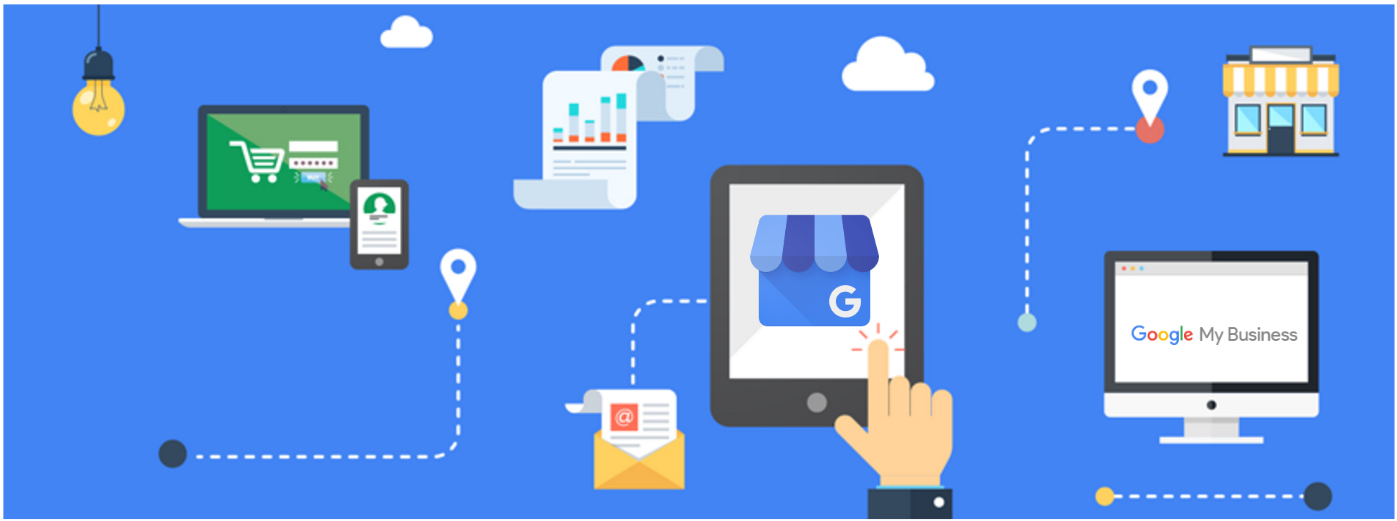
Leveraging Google My Business
Google My Business (GMB) is a tool offered by Google that lets you enter various bits of information about your company such as contact information, location, and business hours. If you have physical locations, this is a must-have piece of the SEO puzzle since it has huge benefits for local SEO.
But even if you’re completely web-based, it’s still a good idea to claim your GMB page and flesh it out with information about your eCommerce store. Google uses the information on this page in other places, adding information to your listing in their search results for example.
This also lets you create a “canonical” source of information for Google. If you don’t create your GMB page, other people could post incorrect information or unscrupulous competitors could post misleading information about your business and Google wouldn’t have an easy way to determine what’s right and what’s wrong.
Local Citations
Similarly to the Google My Business listing, local citations (links) from local websites such as news outlets, your business association or chamber of commerce website, Yellow Pages, and other directories is a great way to boost your local SEO.
The more links from other local websites are pointing to your eCommerce website, the stronger an indicator it is to Google that your business is popular in your local area. That helps with local search rankings.
Content Marketing for Ecommerce

Links are often looked upon as rocket fuel in the SEO world. Unfortunately, on eCommerce sites, it can be difficult to build links directly to product pages.
Content marketing can make this easier by developing resources, informational content, infographics, tools, and other assets that are more likely to be linked to. Third-party websites are much more likely to link to an infographic than a product page. Content marketing and link building go hand in hand. While getting more backlinks is easier said than done, a well-thought-out and executed strategy will help make it easier.
Developing content on a blog is also a great way to create more content you can keyword optimize. If you have relatively few pages on your site, there are also fewer keywords you can optimize for. Blog posts can be a powerful tool to rank for relevant keywords that you weren’t able to optimize your product and product category pages for.
Get Started With Link Building
Through proper website structure, including a topic-cluster content model and internal linking, you can help boost up your “money pages” with your content marketing strategy.
Link building is one of the SEO tactics that you have the least influence on. It can take quite a bit of time to reach out and get momentum with link building, but it’s worth it! Links is one of the main ranking factors, as it shows search engines that other people find your content useful, relevant, and trustworthy.
Here are a few ideas on how you can go about getting more links to your site.
- Broken Links. You can actively seek out broken links on industry articles or blogs. If you come across broken links to content similar to yours, you can ask the site owner or author to replace it with your great content. A win-win link building strategy!
- Directories and Resource Pages. Find directories or resource pages or round-up type pages where your site might be a good fit.
- Influencers. If there are prominent and influential people in your industry, they are often a great source of potential links. Influencers typically have a website with a high domain authority or a large following, so if you can get a link, it will be so much more powerful.
- Target and Replace. You could also find a piece of content that has a good number of links and create a better version. That way, you can approach the sites that link to the original article with your new, improved version, in the hopes that they will link to your article instead.
Link building outreach can be a ton of work, and you often need to send hundreds of emails soliciting links to get a handful of links. Use it strategically and know that it will pay off in the long run. Of course, you can also hire someone else to do it! Linkbuilding is one of those tactics that’s typically included in eCommerce SEO services as well.
Ecommerce SEO Tools
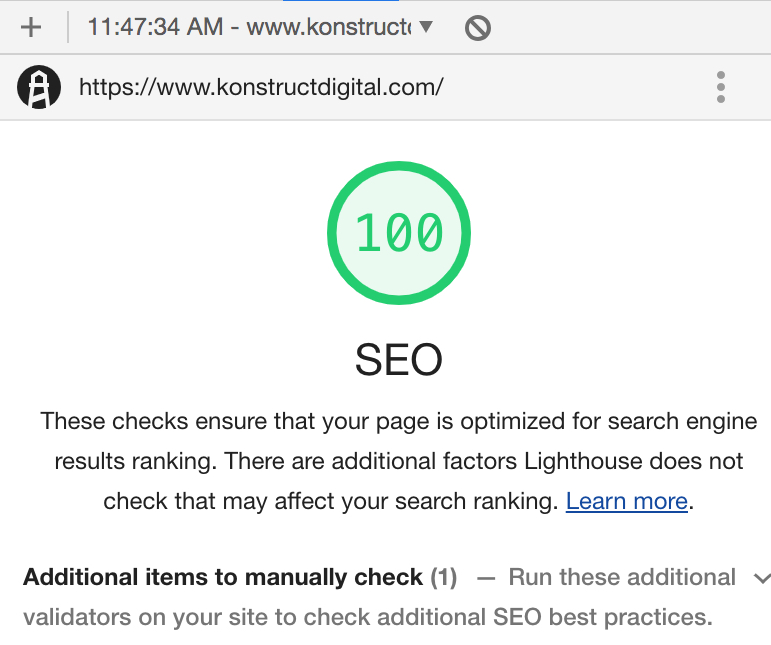
There are lots of tools and services that can help with your SEO efforts. Google provides some itself, such as the Google Keyword Planner and Google Analytics. Others are offered by other companies with data they collect themselves.
Going beyond the Google Keyword Planner, you should look at Ubersuggest and Answer the Public. They’re both great sources of keywords to target on your product pages and other parts of your site.
SEO tools like Ahrefs, SEMrush, Crazy Egg, and MOZ will help you optimize your pages and track the actions of your visitors once they arrive on your site.
You should use an analytics tool to track the visitors on your site, see what pages are most popular, determine conversion rates on individual products, and various other metrics. There are several good tools available but Google Analytics is one of the best, it’s powerful and free to use.
We recommend customization your Google Analytics installation to track conversion events and goals on your website (i.e. purchases). This will allow you to track purchases against what marketing source delivered the user, ultimately enabling you to optimize your marketing spend.
If you want to stay up-to-date on the latest SEO news, there are lots of “secret societies” in places like Slack. You can join these groups—some at a cost and some for free— to get information and news about the SEO world.
Ecommerce SEO Maintenance
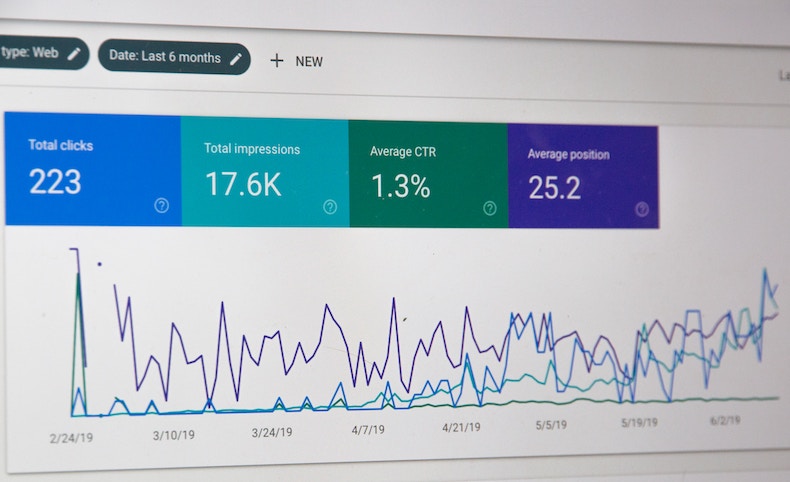
After you’ve completed an initial comprehensive SEO optimization for your eCommerce business, you’ll want to continue your efforts to keep growing in rankings with an ongoing SEO campaign.
That’s right, SEO is never a ‘one-and-done’ tactic. Your competition and search engine algorithms are constantly improving and changing – all factors that could impact your search rankings.
Here’s a sample checklist of SEO tasks to regularly complete:
- Monitor for technical issues. Use a tool like SEMrush to monitor for site technical issues that might pop up such as broken links, slow loading pages, duplicate content, and more.
- Ongoing content optimization. Monitor how Google is ranking your homepage, category pages, and product pages. Continue to optimize these over time to respond to algorithm changes and competitor content changes.
- Respond to algorithm changes. Google changes its algorithm a lot. Monitor ongoing trends and signals from Google to keep your website well positioned to rank well into the future.
- Analyze Click-Through Rates and Conversion Rates. While this isn’t a specific SEO task, monitoring how users flow through your site and where they drop off can provide important intelligence into ways to increase your revenue without changing your marketing spend.
As with so many other things, good maintenance is the key to prevent major repairs and fixes down the line. If you keep an eye on your SEO regularly, you can detect issues as soon as they occur and retain your rankings. Why would you do all this hard work to secure great search rankings if you just let them slip over time?
Do You Need to Become an SEO Expert?
Whew! Now that you’ve read through our eCommerce SEO Guide, you might be a bit overwhelmed by the prospect of applying all these tactics.
While there are lots of places you can turn for up-to-the-minute SEO advice, it can be time-consuming to stay abreast of all the latest changes. Google is notorious for changing things with little or no warning so it’s a bit of a cat-and-mouse game.
If you’d rather focus on what your business does best and leave the search engine optimization to an eCommerce SEO company, Konstruct Digital can help.
Our award-winning team offers effective and experienced eCommerce SEO services. We stay up-to-date with all the latest strategies and technologies, so we can help you rank better on Google, find more customers, and improve your profits. Get a free SEO audit today and discover what we can do for your business’ bottom line.
We are in an ongoing war battling for search results. We face Google constantly changing their search algorithm and unethical SEOs who are constantly trying to exploit the algorithm.
SEO today is a complicated process, all thanks to Google’s complex search algorithm. Before this complex algorithm existed, there were many ways to exploit the simpler algorithms and get the top spot in search results.

Popular Unethical SEO Methods
Unethical SEO is also known as blackhat SEO, and its purpose was to exploit Google’s search algorithms to gain rankings quickly. You don’t want to be on this side though, as the punishments are severe once caught. Your site would be gone from the top 100 search results.
Here are some of those methods that exploited Google’s search algorithms.
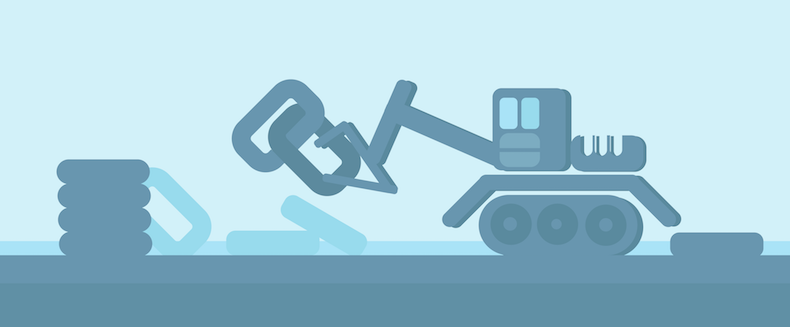
Unethical Link Building:
In its early stages, Google didn’t care where your links were coming from. As long as domains were high in page rank, do-follow, and had anchor text you were targeting. It almost seemed like Google made a direct correlation with quantity and quality.
Link Exchanges
Site owners would exchange backlinks with each other, usually within the same niche and industry, to keep the links relevant. You may think that this is a legit way to build out your link profile, but to Google’s eyes, it isn’t. Google favours natural link building, and exchanging links is considered a link scheme and violates their Webmaster Guidelines.
Guest Blog Link Building
Guest posts are actually a great way to build links to your site if done right. However, the blackhat way of doing guest blog link building is providing low quality or spun articles (more on article spinning later). Inexperienced bloggers would see this as an opportunity to build out content for their site, but it would only hurt their blog as it would be flagged as duplicate or low-quality content.
Tiered Link Building
Having a huge number of backlinks pointing directly to your site was one of Google’s largest factors when it came to ranking. Still, with algorithm updates, Google knew which backlinks were spammy and penalized your site if it contained any.
Blackhatters then came up with tiered link building, which was a layer of protection for their main site. Most people had up to 3 layers of protection, which took a lot of work but with automation tools, made the job a lot easier.
The first layer of protection (Tier 1’s) would give backlinks to your main site. These Tier 1 sites would usually come from Web 2.0s (Weebly, Tumblr, WordPress, Blogger, Blogspot, etc…), expired domains, and more.
Because these sites pointed directly to the main site, the links had to appear natural, and the content had to avoid duplicate content penalties and be readable.
However, in order for Tier 1 links to give your site some ranking juice, they needed backlinks, which is where Tier 2 backlinks.
Automation Tools:
If you were to build thousands of backlinks in a short period of time, it would be extremely time-consuming. Blackhatters, however, were able to generate tools just for this. Here are a couple of examples of those tools:

GSA SER (Search Engine Ranker) & Scrapebox
Random blog comments are everywhere, and your site has probably fallen victim to them. The majority of those comments aren’t actual people leaving them; it’s their bots.
GSA SER and Scrapebox were tools used to find sites that are in your niche, and drop your links with the anchor texts you want to those sites. Forums, blog comments, and Web 2.0s were the main targets. For sites that required registration, they could even automatically create the account in order to post on the site.

Chimp Rewriter
Writing content takes tons of time. If you were to create thousands of links through guest blog posts, that is a ton of writing.
Then comes the option of “spinning” an article. This means that you can automatically rewrite the same content but appear as unique content to Google.
Let’s look at this example: {This is|Look} {a sentence|a post|content}.
It would put out either, “This is a sentence”, “This is a post”, “This is content”, “Look a sentence”, “Look a post” or “Look content.”
With the use of AI, Chimp Rewriter was able to automatically create the spintax from the article you provided and come up with brand new complex sentences with different phrases.
This, however, wasn’t able to create a fully readable sentence in a human’s eyes. At the time, all Google cared about was the content being unique. However, this has since changed as Google uses readability as a factor for ranking.
PBNs
Private Blog Networks (PBNs) are pretty similar to tiered link-building. This became a popular method and is still alive today because of how powerful it was.
Your PBN would, in theory, be your Tier 1s, and you basically would be running your own blog network and creating content for Tier 1 each site, which is a lot of work.
To combat the workload, people would either pay for articles or use Chimp Rewriter.
Hidden Anchor Text
The number of times your targeted keyword showed up on your page used to be a huge factor for Google. This is similar to keyword stuffing, but the difference is that these words are hidden.
A wall of text containing all the keywords would usually be placed at the bottom of the page, with the font being the same color as the background. This kept pages looking clean to the human eye but completely visible to Google.

Web 2.0s
Web 2.0’s were highly popular in the early 2010s. Sites like Weebly, Blogger, Live Journal, Diigo, AngelFire, etc. were popular targets for black hat SEOs due to their high domain authority.
The best part? Signing up for these platforms were free, and the majority of these accounts were do-follow links. Google at the time, also gave favour to links from Web 2.0s.
Automation tools were able to create bulk accounts and post content to these Web 2.0s.
A Brief History of Google Algorithm Updates
You may not be too familiar with these names, but here’s a quick history lesson on the early algorithm updates of Google.
Florida
This was the first major algorithm update by Google that launched a new era of SEO. In this era, invisible anchor texts, invisible links, and keyword stuffing was the biggest way to get ranked. The Florida algorithm update launched in November 2003. Websites using the spammy techniques the update sought to crack down on were wiped out before the holiday season.
Jagger
2005 was a year where link-building played a big part in SEO. Many sites were taking advantage of this by building spammy and unnatural links to their websites. Jagger was released in 3 stages from September to November that targeted backlink spammers the most.
People who were using technical tricks (such as using CSS to hide text to users but remained visible to crawlers) also took the hit pretty badly.
Big Daddy
This update was a major update that didn’t necessarily target black hat SEO. Big Daddy was meant more to improve the quality of search results. It was an infrastructure update that focused on URL canonicalization (Specify which URL to show in search results), Inurl: Search Operator (Finding pages with a certain word in the URL), and 301 & 302 Redirects.
This brought up the importance of technical SEO, which even today plays a major factor. Any broken links or broken pages can have a negative effect on a page’s rankings.
Vince
Vince was a quick update released in January of 2009, but it was an update that made big brands ‘win’. It gave favour to big brands by pushing them to the first page results. In this era, search results were filled with affiliate sites and black hat spammers that took over the first page. One of the major reasons for this update was because Google valued trust, quality, and relevance, which is what big brands brought to the table.
This update emphasized the importance of having authority in a certain industry.
Google Updates that Killed These Methods
When it comes to the war with Google and black hatters, the terms panda, penguin, and hummingbird are common to hear.

Panda
As a push for quality, Google released its first major update to reward high-quality websites. Here are some metrics Google would use against your site’s quality.
Low-Quality Content
People are looking for answers, and if your site is unable to do that, Google won’t see your site as an authority in the industry, so why would it show your website to people looking for answers?
If you notice high-ranking blog posts on Google, they’re usually thousands of words long because they aim to answer questions thoroughly.
Duplicate Content
Stealing content was a common practice among black hatters. High-quality websites put out unique content. Panda gave Google an idea of which sites were copying the content, and gave them the ability to devalue these sites in search results.
Low-Quality Guest Posts
Submitting guest posts is a great way to get high-quality links, but rejection can happen. It sucks, but don’t take it personally. Google devalues sites with low-quality content. If your guest blog post is low quality, it could negatively affect someone else’s site. All they’re doing is protecting themselves!
Ad Ratio
This is a huge red flag for a spammy looking site. It also uncovers the main intent of the website, which is to make money rather than provide value.

Penguin
The Penguin algorithm was needed by Google to continue to fight black hatters, and this is the update that had a significant impact on them.
Having a proper link profile was one of the biggest factors that determined whether a site was ranked through black hat techniques or not. Google took a look at where your links came from, the frequencies of exact phrase anchor texts, how often your links were coming in, how fast they came in, etc…
As a result of this, a ton of black hatters got wiped from search results overnight.

Hummingbird
Hummingbird was a significant update that Google implemented that shifted the focus from combatting black hatters to focusing on users. This gave websites more opportunities to rank higher.
Semantic Search:
Instead of focusing on exact match keywords, Google learns the ‘natural language’ of the user and looks for related keywords.
Conversational Search:
This was the core of the Hummingbird update. Search terms like “where is the nearest ice cream shop”, “how do I make more money”, “what time does the gym close”, etc. The purpose of this was to keep things more natural. This was a push for website owners to stop trying to game the algorithm and put more focus on writing content for people, not robots.

Fred
This is the latest of the current big algorithm updates from Google. It targets blackhat sites that focus heavily on monetization. Sites that focus solely on monetization usually don’t focus on user experience, which is what Google is trying to push.
Sites affected by this update have seen up to a 90% drop in rankings, and here are some of the key factors that caused it.
Misleading ads
Google has gotten so much smarter over the years and can tell if two things are related or not. This means it can tell if an ad on your site is misleading or not. Misleading ads lead to negative customer experiences.
This included ads that tricked visitors to click on them. Notice how you don’t see a lot of “Download Now” sites that often anymore? They got punished. Gone are the days of trying to download a specific file from a site, clicking the download button only to be redirected to some form or survey you have to fill out.
Saturation
Ads on a site are fine. But there is a line, and if you cross it, Google can punish you for it. Things like excessive ads on a page or tons of affiliate links on your page can put your site on Google’s bad side. You don’t want that.
Unrelated Content
Google favours authority sites. If you have a site with tons of articles, but the topics aren’t related to each other, then that site will most likely lose its rankings. Google sees broad topic sites as sites that are trying to rank for any keyword out there for the sake of getting traffic. This, in practice, isn’t a good idea anyway since a targeted audience won’t be defined.
Mobile Unfriendly
Everyone Google’s on their phone. If your site isn’t set up for mobile or isn’t responsive, then it will affect your rankings. User experience plays a factor for SEO, so if your site is hard to navigate and look at in your phone’s browser, say goodbye to your rankings.
Google’s Algorithm in 2019
Content is king. If you want your site to be safe from algorithm updates, your best bet is to keep things natural and continue to provide value, good content, and positive user experience. Keep your blog topics relevant, and don’t worry about stuffing keywords. Remember, readability and user experience play a factor in your rankings. And on top of that, make sure your technical SEO is up to par!
Imagine a group of top rank marketers standing in a circle in cloaks and candles chanting away to the internet superpowers for massive traffic gains to their sites. The very next day, their website traffic shoots up exponentially. Welcome to the marketing underground secret society, where you are given all the traffic you could ever ask for.
Just kidding… but there are private groups where top rank marketers hang around and where you can improve your marketing skills from them. These private groups are found in Slack.
Private Slack groups are some of the internet’s best resources to blow up your expertise. Researching the latest methods eats up valuable time as there are too many different sources to choose from. Private Slack groups eliminates this time sink by effectively delivering the content you’re looking for in one place.
When it comes to learning the latest methods there are lots of places online to look for. As a result, just looking for content eats up valuable time. Private Slack groups deliver all the content effectively all in one place.

Why Join a Private Slack Group?
An Evolving Place to Learn
The best learn from the best. These private groups are filled with industry experts that share ideas and are open to learning new techniques. People in these groups keep up and teach each other of the latest trends when it comes to marketing, and when collaboration happens, innovative strategies are created.
Active Slack groups provide tons of value and the people in it are like-minded and experience the same issues you will run into. Solutions to these issues are shared around and everyone is there to support each other and learn from each other.
Accessibility
You’re already using it at work (most likely), so it makes sense to explore Slack’s full potential.
Instead of having to switch through different browsers, windows or an aptitude of tabs, you are able to stay in a single app with a clean interface.
Everything you need and are looking for is all in a single app. Less clutter; fewer distractions; better productivity!
Network with Other Professionals
Surround yourself with peers with common goals. These are your new accountability partners.
Private Slack groups are filled with people trying to achieve the same goal. For example, when you join a marketing group, you connect with other marketers. This is a great way to network with fellow people in your field and possibly work together on a project.
Build Your Personal Brand
Joining a Slack group is a great way to build your own personal brand. The more you contribute and give others value, you are setting yourself up as an authority figure in your space.
You would be the one that people would turn to for questions and answers and the one to be trusted.
Boost Productivity
Facebook is a great source to join groups within. However, Facebook is filled with tons of noise and distractions with endless scrolls of memes and recommended videos to watch which is the nature of social media. Slack is purpose-built and isn’t a social media platform. Work happens in Slack and the distractions are kept to a minimum.
Unbiased Feedback
If you have a new idea or a strategy you’d like to try, these private slack group can help you determine which direction you should take. People in these groups may have had similar ideas and have experience and could help guide you with where you need to be.
Which Slack Groups to Join?
Paid Groups:
Slack is a free service to use, but not all groups on Slack are free. The best private groups on Slack are paid because they contain the highest quality members. The downside of free Slack groups are the trolls, spammers, and freeloaders. These people are the type of people to not give value to the group and having a lot of these people in the group results in the group is inactive.
People that are willing to pay an entry fee have serious intent in learning and sharing. These are the type of people that continue to help increase the value of the group. Because money has been invested, these members tend to make the most out of it and actively engage with each other and stay dedicated long term members rather than freeloaders who check out the group and leave after a few days.
Here are a few paid private Slack groups we recommend:
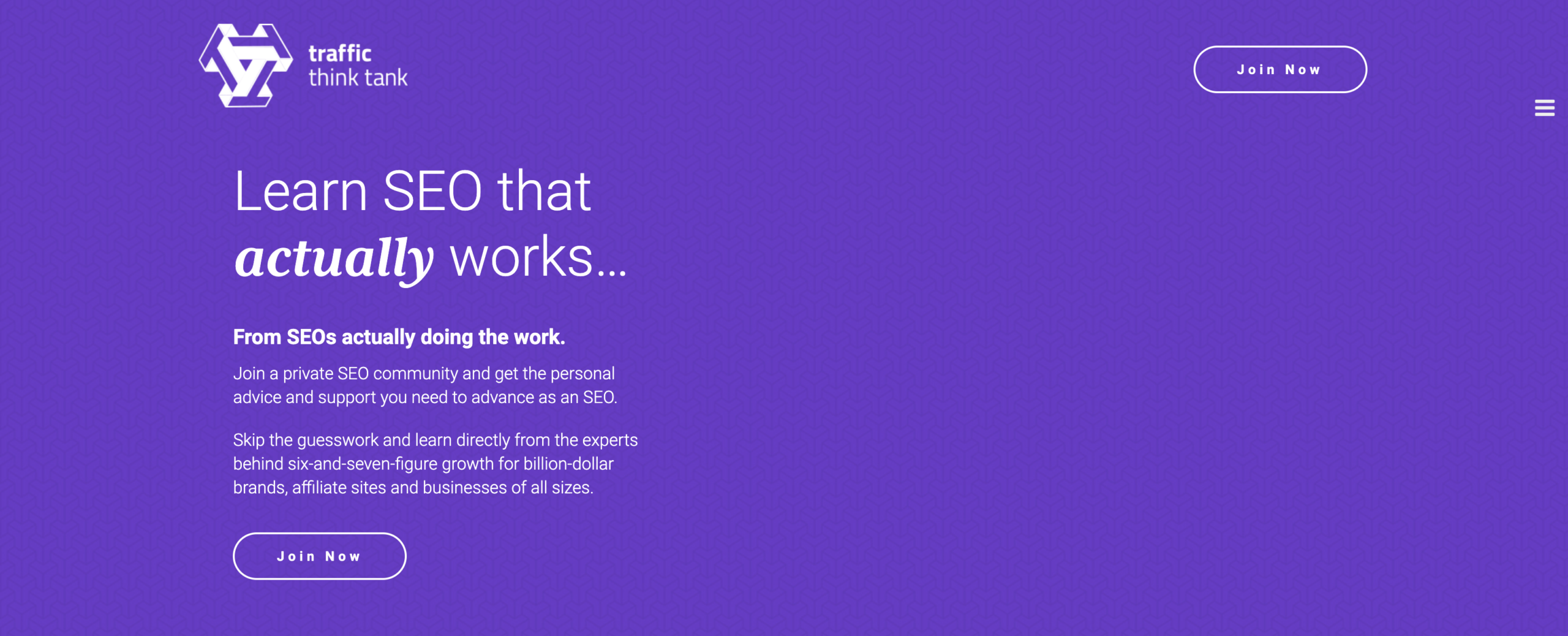
Traffic Think Tank: $119/month
This is a private group dedicated to SEOs. The best and latest information on anything SEO related is found in this group.
Joining Traffic Think Tank also gives you hundreds of hours of exclusive content and access to live events and webinars hosted by big-name marketers that can’t be found anywhere else.
This group is filled with industry experts that share what is working and isn’t working in today’s SEO climate. SEO is constantly evolving so it is important to keep up with the latest trends. Because of the volatile nature of SEO, this group remains active to keep up with changes.
Learning SEO takes up tons of time and joining Traffic Think Tank is probably one of the best ways to significantly decrease learning time.
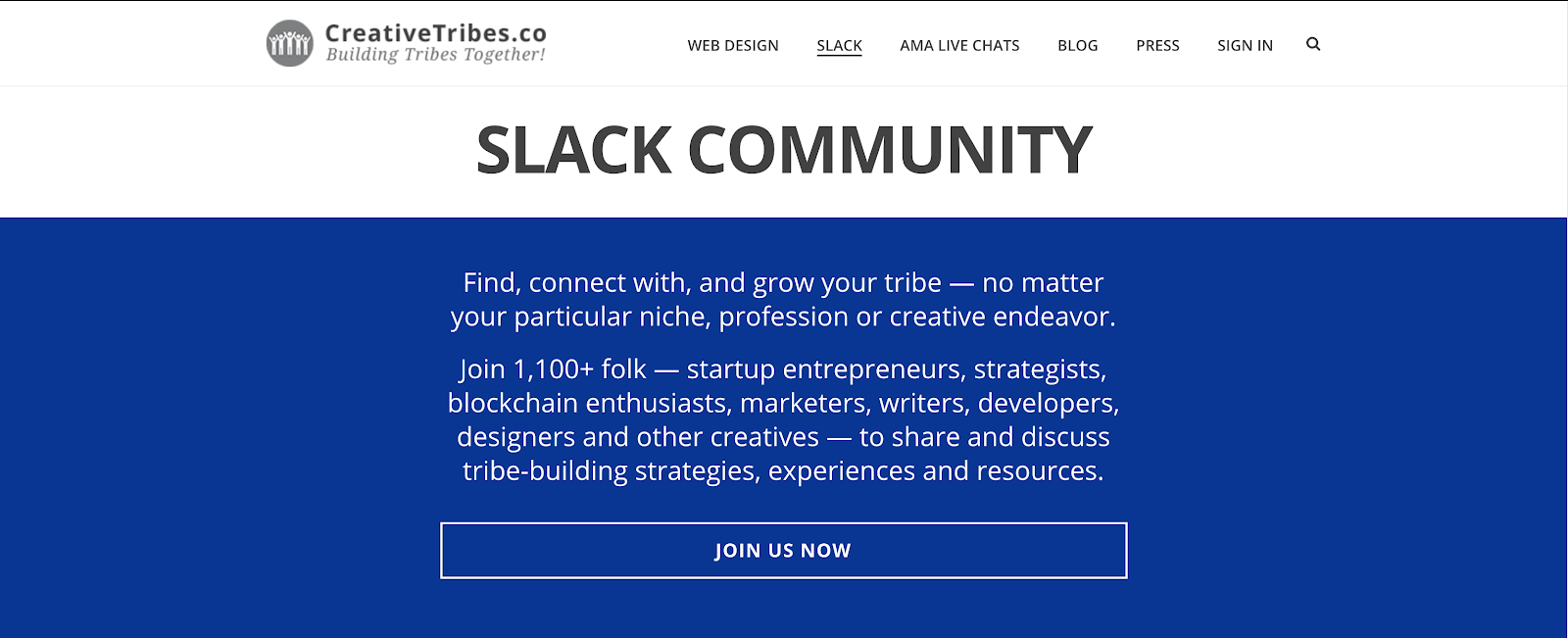
Creative Tribes: $27 One Time Fee
The purpose of Creative Tribes wasn’t to be a marketing group. It is a group dedicated to startups, entrepreneurs, marketers, and creatives where they can collaborate and share different ideas and strategies. The great thing about this group is that because it isn’t focused on just marketers, there are tons of opportunities for creative approaches from a non-marketing perspective. You won’t be stuck to the ‘traditional’ methods of marketing.
When marketing for other companies, it is crucial to know the ins and outs of their industry. Creative Tribes is filled with industry leaders that you can learn and gain knowledge from. Understanding the industry makes your marketing efforts a lot easier and more effective.
Creative Tribes is also a diverse community of people with different strengths and skill sets, not just marketers. This provides an opportunity to collaborate with others on various projects or even gain a long term client. The value of this group is building relationships with people who will give you a fresh look on growing your business.

Startup Chat: $29 via Startup Deals Membership
One of the largest Private Slack communities aimed at startups. Running a startup is challenging and there are tons of obstacles along the way. You aren’t alone.
Although this isn’t directed at marketing, the people here are all focused on the same goal; to grow their startups. People in startups work their way up from level zero, so being creative and innovative is a must. When creativity collaborates, a whole new approach to marketing is born.
There are people ahead of you that you can learn from, people in the same boat as you to keep you accountable, and people behind you that you can help bring them forward. It’s a community where startup entrepreneurs continue to help each other grow.
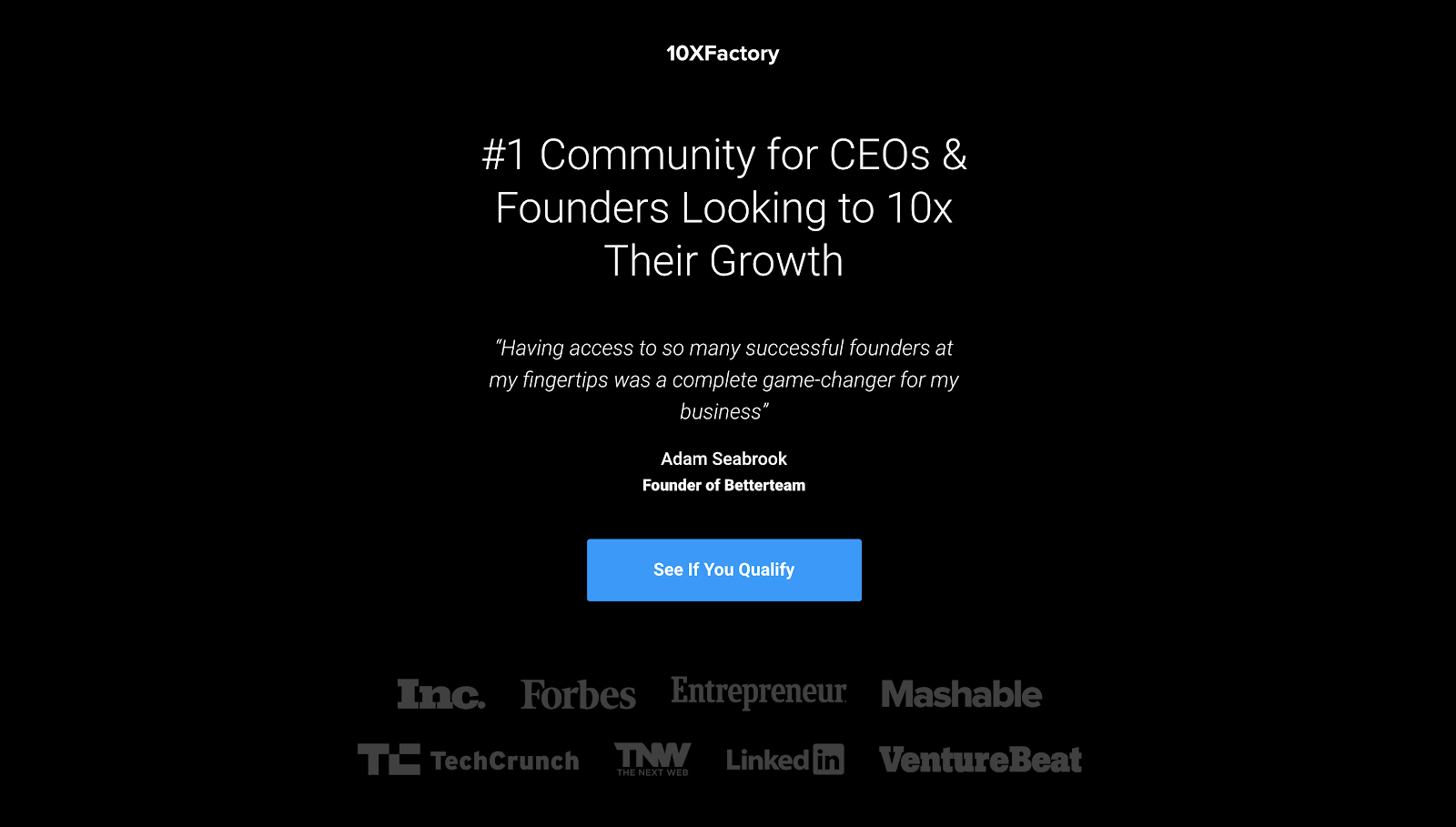
10xFactory: $147/month
10xFactory is a highly engaged group made for entrepreneurs. The community has tons of education and training including videos done by the founder of BigCommerce and other SaaS companies.
10xFactory values networking as most of the communication between members happen over the phone or through group conference calls. The 10xFactory Slack group can be seen as a meeting place
A great feature of the group is the ‘hotseats.’ In ‘hotseat’ sessions, a member hops on a video call with 5-20 other entrepreneurs and discuss their top obstacles holding them back, while the others collaboratively solve that problem.
10xFactory values problem solving and tackles problems that prevent businesses from experiencing growth.
Free Groups:
Joining a free Slack group has its ups and downs. The obvious reason to join is that it is easy to join and has no costs to it. You have free access to valuable information that would otherwise be hard to find other places online.
However, there are tons of people who are in this category; looking to gain free valuable information, aka freeloaders. When a group is filled with freeloaders, there is no engagement going on. A trend we noticed is that even though a group may have thousands of members, it feels like a ghost town as no one is interacting within the group.
One of the biggest issues when it comes to free groups is spam. Slack groups are a target for spammers as members are looking for the same thing. As a result, people would post links to their own sites and position themselves as ‘giving value’.
When this is paired with a non-engaging group, the non-engagement continues to grow as new members are turned off by the spam and won’t visit the Slack group again.
However, there are some free group that although don’t give as much value as a paid group, they still can help give value. Here are some free Slack groups to join:

Online Geniuses:
Online Geniuses is one of the largest marketing groups on Slack. Popular marketers such as Neil Patel, Gary Vaynerchuk, Rand Fishkin, etc.. host AMAs in this Slack groups.
Although Online Geniuses is free, membership isn’s guaranteed. Members are thoroughly vetted and may even take weeks to get approved after submitting an application. This is to ensure that there are only quality members in the group and keep the group quality strong, which is an issue when it comes to free private Slack groups.
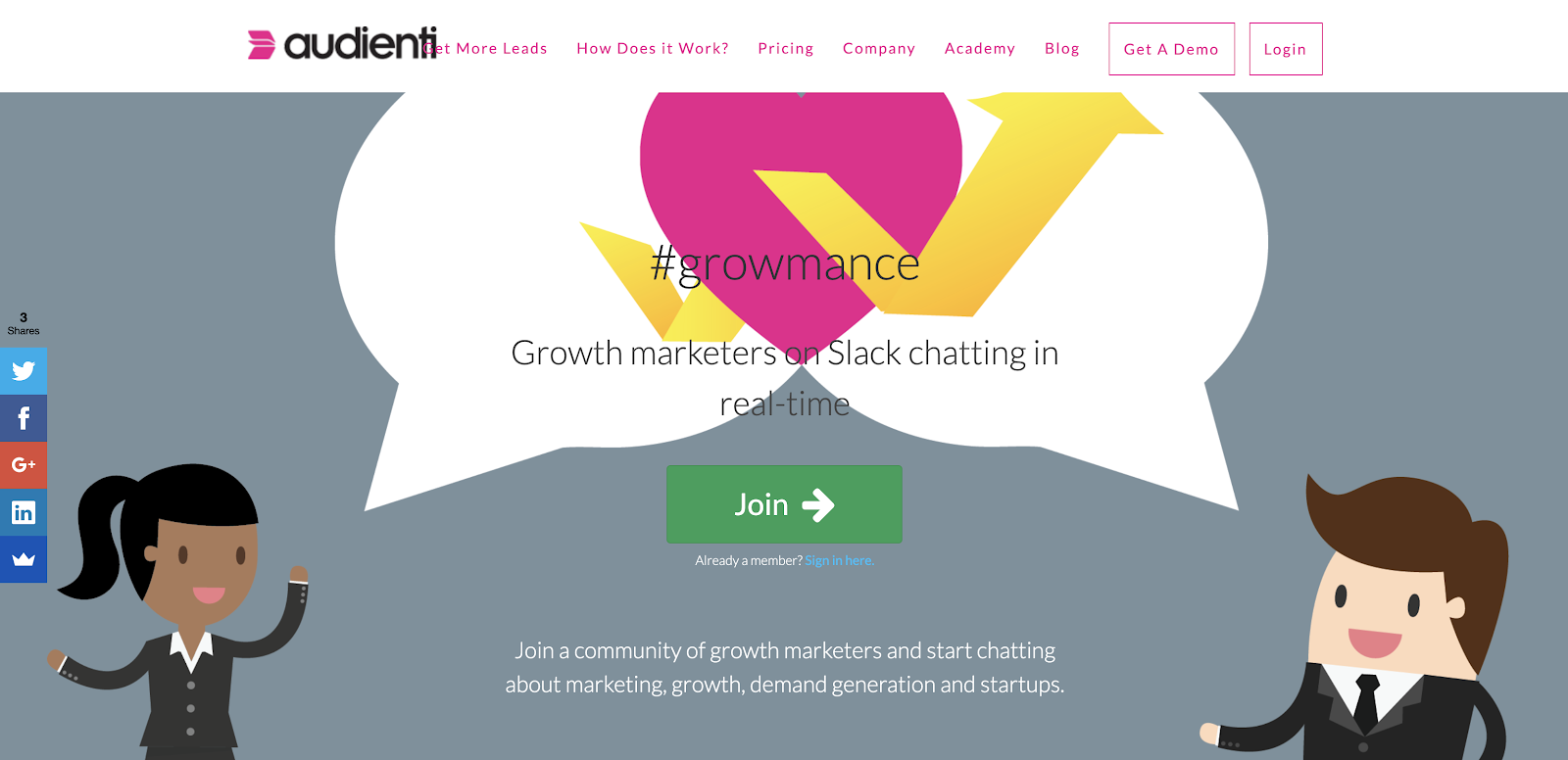
Growmance:
Growmance is a Slack group that focuses on growth hacking. It’s a group to develop, brainstorm and share new ideas for marketing. Growth hacking is the type of marketing that doesn’t rely on ‘traditional’ methods. In fact, it actually tries to do the opposite; prove ‘traditional’ and ‘safe’ methods wrong.
Growmance is not only a place to improve your marketing skills, but to observe the creative angles people are taking in their marketing efforts.
If experimenting with new methods and taking risks is your thing, Growmance is a group for you. There are thousands of experts in the group that you can throw your ideas and strategies at, and get feedback on them and they could be up for experimenting with you too.

Backlinks:
If you manage a website, then you know that acquiring backlinks is important. Backlinks play a factor in SEO and the more backlinks you have pointing to your site, the more likely Google will rank your site higher, as long as those links are legit links, and your site’s technical SEO is on point.
However, acquiring backlinks can be a challenge and takes time to do organically. Fortunately, with this free Slack group, you are able to network with other site owners to either give or receive backlinks from them. This Slack group’s main purpose though isn’t for backlink exchanges, but to learn and share SEO and other marketing knowledge with each other, with opportunities to share and receive backlinks.
Keep in mind, you don’t want to have reciprocal links with other site owners as Google can see this as unnatural and potentially can penalize your website.
Taking Your Skills and Knowledge to the Next Level
Joining private Slack groups is a great way to boost your skills in whatever field you’re in. It’s a great place to learn and get real-time answers to your questions and also a place to share your experiences and expertise.
By keeping active in these groups, you are building up the value of your personal brand, and as you continue to grow and learn you are building up authority within your industry. The fastest way to get to the top is to surround yourself with like-minded people who have made it.
What are Link Attributes and Why Should You Care?
On Tuesday this week, Google announced on their blog the introduction of two new link attributes: “sponsored” and “ugc”.
Today, we’ve announced two new link attributes – “sponsored” and “ugc” – that join “nofollow” as ways to identify the nature of links. All will now work as hints about which links Google Search should consider or exclude for ranking purposes. More details:https://t.co/V6X2xjEC5L
— Google Webmasters (@googlewmc) September 10, 2019
While this blew the minds of some SEO’s (we’re a very excited bunch when google updates anything), it’s leaving some business owners and webmasters scratching their heads about what it means for them. More importantly, many are left asking the question – do I need to do anything?
An Evolution of nofollow
First, let’s take a step back and understand what link attributes are for.
The link attributes announced this week are an evolution of Google’s “nofollow” link attribute. Launched nearly 15 years ago in an effort to fight “comment link spam”, the “nofollow” attribute gave webmasters power to markup links added to comments (typically on articles) as a way of indicating that the website didn’t necessarily endorse the links being posted.
In the earlier days of SEO, building links in the comments of external websites was a common tactic to help get websites ranked better.
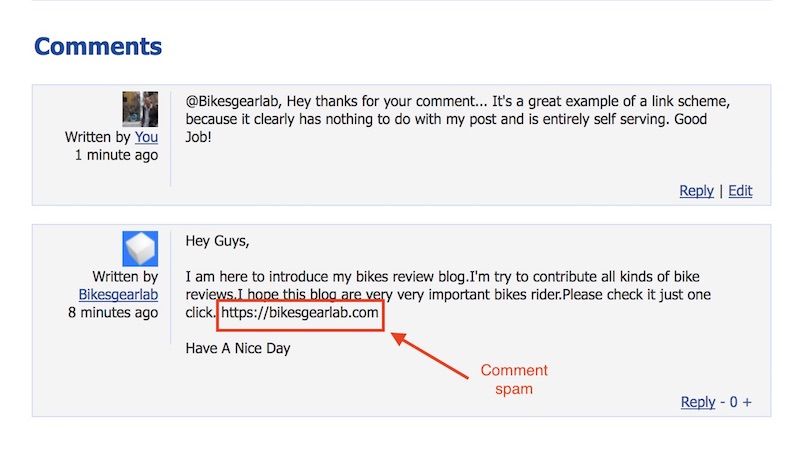
Linking to external websites can provide important contextual clues to Google. If your blog has a bunch of comment spam linking out to certain websites, or other more unsavoury sites, it could potentially harm the ranking of your website.
Allowing developers to essentially say “Hey Google, don’t follow any links in my blog comments”, empowers websites to better control Google’s understanding of your site and not allow any of their domain cred to leech on.
“nofollow” also sometimes served a secondary purpose of trying to tell Google not to index certain pages, however, this served as a poor mechanism for that considering there are so many other ways a page can get found and indexed. Google has never recommended that usage, but recognizes that it has been used that way in the past.
The new “sponsored” and “ugc” tags are an evolution of this original “nofollow” tag. These attributes provide a few more clues to Google as to the nature of why you have marked a link as “nofollow”. You can even use multiple attributes.
“Nofollow” = my website does not endorse this other webpage or I don’t want any of my site’s authority passed on.
“Ugc” = User Generated Content: any content that third parties can submit to your site, for example, user comments, forum posts, online discussions, etc. Anywhere that users can submit their own content on your site and potentially include links.
“Sponsored” = links on your website placed for some type of compensation. This could be affiliate links, influencer arrangement links, sponsored guest posts, and more.
Do you have to add attributes to your links or change your existing “nofollow” links?
In regards to changing your existing “nofollow” links, the short answer is no. Google has been quite clear about this.
You literally don’t have to change anything if you don’t want. The post is explicit about that: https://t.co/rMmSrUHaSQ pic.twitter.com/gQw1k6Rgda
— Danny Sullivan (@dannysullivan) September 10, 2019
However, If you have existing links on your site that fall under UGC or Sponsored Links, and these have not been marked as nofollow in the past, implementing Google’s new guidelines would be a good idea if sustainable rankings are important to you.
How do you add attributes to links?
The code markup for links is simple:
<a href=”https://examplesite.com” rel=”nofollow”>This is my link</a>
In the example above, rel=”nofollow” could be replaced with rel=”sponsored” or rel=”ugc”, or even rel=”nofollow sponsored”, depending on the applicable situation.
Do I need to add rel=”ugc” to all my website comments?
If you’re using a CMS like WordPress, most good third party comment tools have already implemented rel=”nofollow”. With these latest updates from Google, many will update these with rel=”ugc”. Check with your comment service provider if you are unsure.
If you have a custom or enterprise website platform you may need to get your website developer to make this update for you. That will be much simpler than manually monitoring your comments and manually updating any links with the appropriate markup.
When should you use rel=”sponsored”?
So much of Google’s search algorithm is a black box. I’m personally of the opinion that when Google tells you to do something, they have good reason for doing so.
Unless you like to operate on the fringes of SEO (aka you’re OK with risking penalties), if you accept any sort of compensation for a link, you should mark the link as rel=”sponsored”.
I believe Google has gotten fairly smart at identifying sponsored content or content with sponsored link placements on its own. I suspect not using the correct markup will cause an algorithmic penalty in the future (if this isn’t the case already).
Do links marked as “nofollow” really not count for anything?
On the Google’s webmaster blog, they gave important information about the value of nofollow links:
“When nofollow was introduced, Google would not count any link marked this way as a signal to use within our search algorithms. This has now changed.”
It’s been theorized by SEOs for a while that “nofollow” links were still passing juice, if not a diminished amount. This statement confirms that this theory has been true for some period of time.
We’ll consider any links with these attributes within our *ranking* systems now — understanding how people link to each other, etc, deciding how to analyze those. But nofollow also had another purpose, which was to block crawling and indexing. That continues thru 2020…
— Danny Sullivan (@dannysullivan) September 10, 2019
Reactions to the news
Whenever new news comes out of Google, half the fun is watching how SEOs react, and the theories that follow:
Sympathy for homegrown CMSs and Enterprise Websites:
Did you guys give thought to the number of homegrown & enterprise CMS tools that will need to be changed to support this change & how long it takes to get companies to make ANY changes to those tools?
— Kristine Schachinger (@schachin) September 10, 2019
Then to get their teams of content people & devs to understand it & care? pic.twitter.com/mPrQ6TEow0
Feeling Disrupted:
— David Esteve (@DeiviZzZ) September 10, 2019
Sceptics:
I find the shift to the “hint” model to be rather hubristic. It carves out more arbitration power for Googlebot at the expense of webmasters’ agency. So many metadata are already technically only “suggestions” to Google; we shouldn’t make things even murkier.
— Calvin Ke (@ccalvinke) September 10, 2019
How will link attributes impact search going forward?
Knowing what’s going to happen with Google’s search algorithm going forward is always full of speculation, but that doesn’t mean it isn’t fun to guess.
As stated earlier in this article, I suspect there might already be an algorithmic penalty in play particularly when it comes to sponsored content. I think Google has gotten smart about websites which might be making compensated link placements and penalizing them.
My opinion is that Google is giving webmasters the opportunity to come clean before it penalizes your site. Or potentially even remove an algorithmic penalty that might be already applied.
In my jaunts through the web on a daily basis, I see a ton of high authority sites, with decent content, but are placing links, and these sites have incredibly poor traffic. It doesn’t completely add up, thus suspect an algorithmic penalty might already be in play.
This could end up causing disruption in the paid link space, which is already technically against Google’s guidelines. It seems that Google’s “stick” for enforcing this might be getting stronger.
My hope here is that this is an honest play by Google to allow webmasters to be transparent about the links they place on their sites, and ideally ultimately reward them for doing so.
But as with anything with Google, we’ll have to see!
Getting hacked sucks. You lose money, your customers lose trust in you, and it’s a pain to resolve all the issues. But good thing you’re smart and have already implemented some security protocols for your site.
You’ve implemented an SSL certificate, fixed your mixed content issues, and your site is now showing as HTTPS. You know that HTTP is outdated and will hurt your search rankings and conversions.
HTTPS is secure and you might be hoping that those are the only combinations of H, T, P and S you need to know.
But have you heard of HSTS headers? Most likely not, since it isn’t a topic that’s being talked about a lot, but it’s the last mile in a marathon that makes your site extra secure.
Implementing HSTS improves your site’s security, site speed, and SEO.
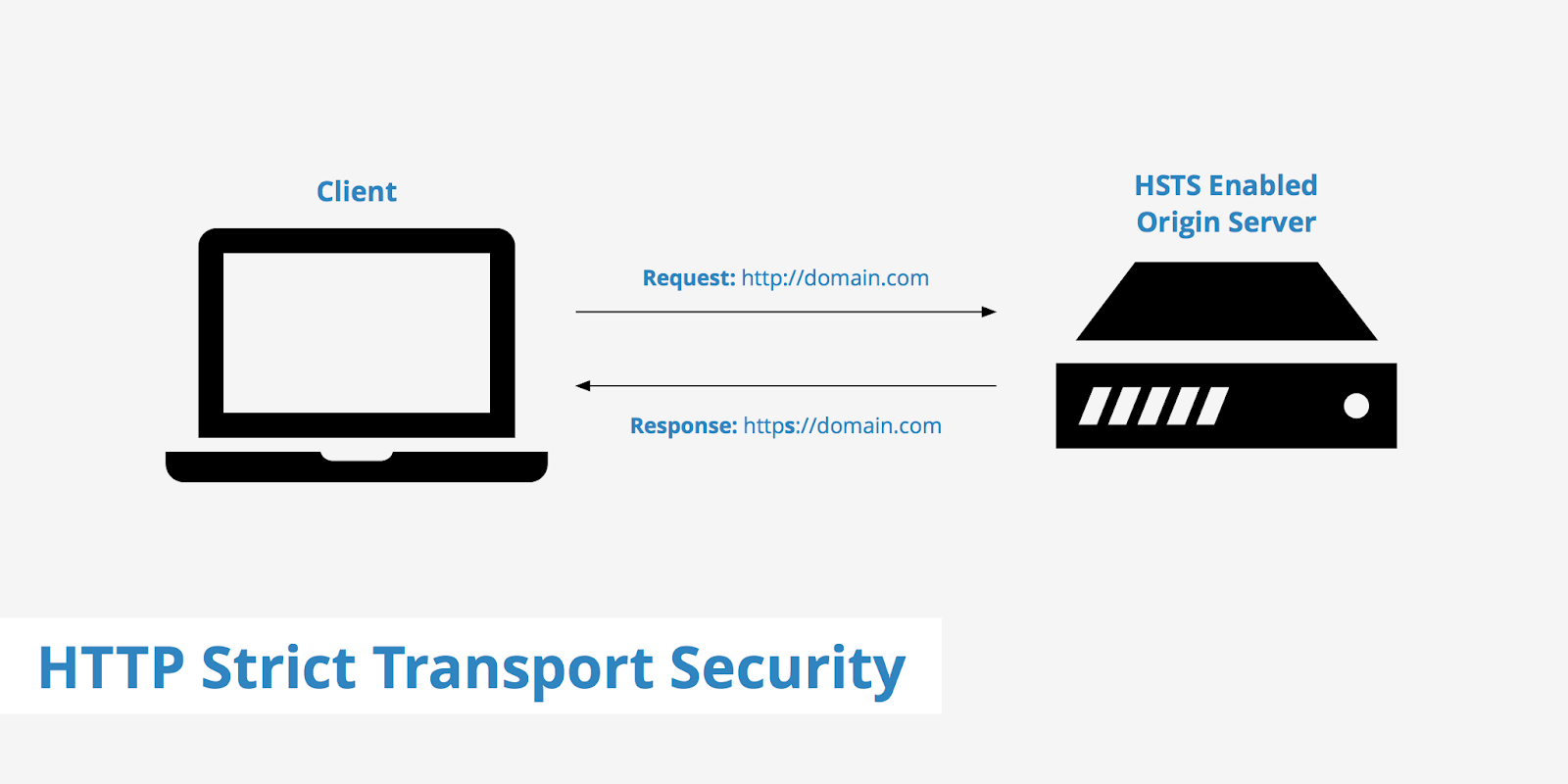
What Is HSTS?
First off, let’s get geeky and talk about the basics of how websites work. Your browser (the client) wants to access a website, so it asks the server (where the website is hosted) if it can access it. Then along with the file or webpage, the server sends back some information; information like the date, the size of the file, type of file, data about the server, restrictions, etc…
HSTS headers are simply just response headers from the server that tells browsers that it can only connect to a website using HTTPS. HSTS stands for “HTTP Strict Transport Protocol.”
Imagine a fork in the road, one way leads to a highway, the other leads you through a pirate-infested jungle only to find a sign that says go take the highway. A regular HTTPS redirect leads you through that second road. However, HSTS forces you to take the highway even if you asked to check out that other road.

How Does HSTS Improve Security?
In a nutshell, it prevents man-in-the-middle attacks from hackers. The most common HTTPS implementation is a 301 redirect, from a HTTP version of the site to a HTTPS version of the site.
Here’s what’s going on:
When you type in http://website.com, the server will call for the http version of that site. Because of the 301 redirects, the server will then redirect you to https://website.com instead.
This is where hackers take advantage. These few milliseconds that it takes to switch from HTTP to HTTPS is crucial as the site is extremely vulnerable. With this exposed window, hackers can implement a man-in-the-middle attack and block the site from using HTTPS.
Back to that analogy, while you are making your way from the sketchy road to the highway, this is where the pirates have their way with you, and even block your access to the highway.
As more sites are moving towards HTTPS, hackers are constantly finding new ways to break HTTPS, and the HTTP exploit is the most common.
HSTS prevents all of this from happening. HSTS forces sites to load over HTTPS, so even if you try loading the HTTP version of a website, the HTTP request gets ignored and gets read as an HTTPS request instead.
HSTS forces browsers to load the secure version of the site immediately and any attempt to load any non-encrypted version of the site gets blocked.
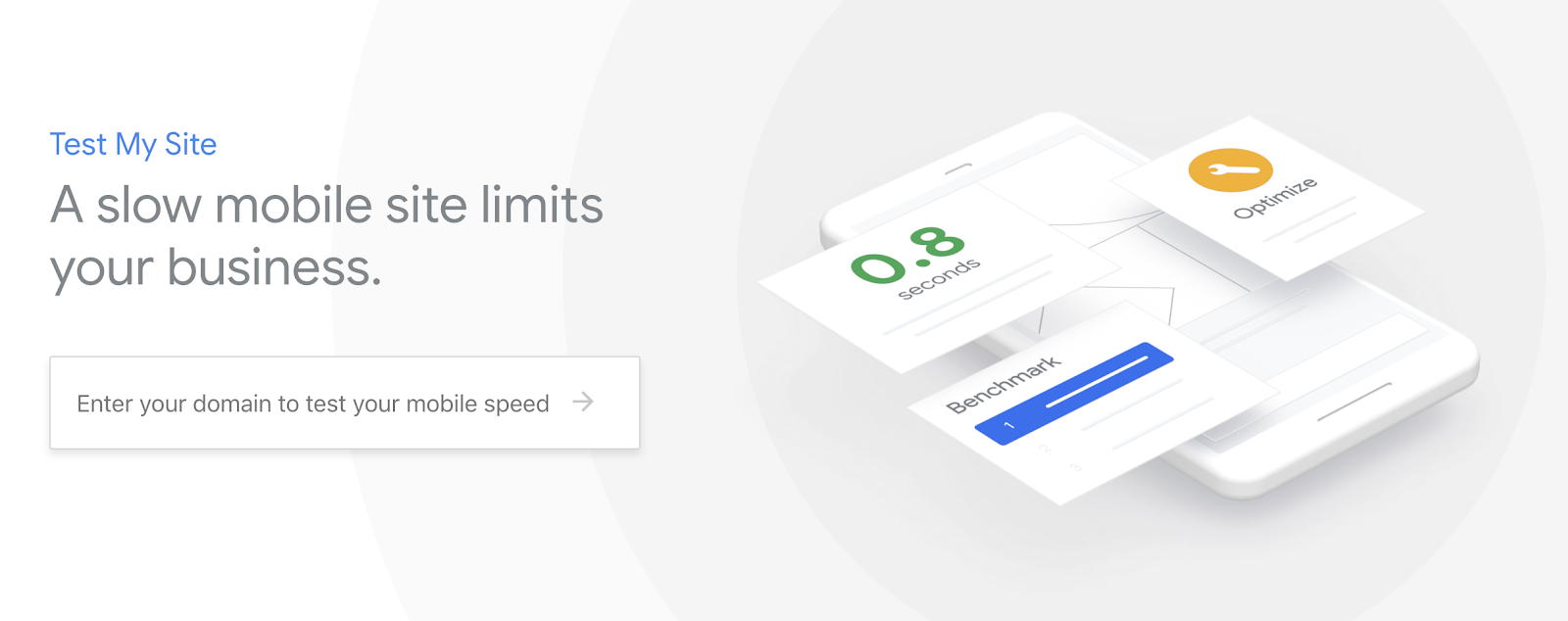
How Does HSTS Improve Site Speed?
Let’s go back to that road analogy. Your instinct is to always go through the jungle, so even if there’s an option to take the highway, you will always attempt to go through the jungle before running into the highway sign.
When you load a site using only HTTPS, it will try to call HTTP first before realizing the site supports HTTPS. Making the initial trip down the wrong path only adds time to your journey in the way attempting to call HTTP causes a delay in website load times.
A prerequisite of HSTS is that SSL must be present on the website, meaning HTTPS must exist; the highway must exist. How HSTS helps with speed is that it forces you to take the highway, making you not have to check the roads; It forces a site to load HTTPS without the need to call HTTP.
How Does HSTS Improve SEO?
Yes, it’s finally time we’re talking about SEO! How does HSTS affect SEO? Through collecting brownie points from Google. Implementing HSTS gives a positive impact to the factors Google is using to rank.
Security
Google values security. With all the trust issues going on lately with people’s data, Google does its best to keep an individual’s personal information safe. The safer a site is, the more Google will help rank it.
Google is not going to prioritizing a high risk website. Why? They’re *almost* liable for what happens to you if you visit a malicious website
Site Speed
Site speed plays a major factor when it comes to ranking websites because it correlates with a positive user experience. When a user visits your website and takes forever to load, will they wait for your site to load? No! This is the era of fast internet. If your site won’t fully load fast enough, your visitors are just going to nope out of your site.
As a result, your bounce rate goes up and Google will see that people aren’t happy with your site. Google likes keeping its users happy, so if your slow site makes Google traffic unhappy, your site will start losing its rankings.
Patience doesn’t exist online. Speed up your site, make people happy, and rank higher.
Installing HSTS on WordPress
Installing HSTS Manually
If you’re brave enough to touch your site’s code, copy this code into your theme’s functions.php file.
add_action( 'send_headers', 'tgm_io_strict_transport_security' );
/**
* Enables the HTTP Strict Transport Security (HSTS) header.
*
* @since 1.0.0
*/
function tgm_io_strict_transport_security() {
header( 'Strict-Transport-Security: max-age=10886400; includeSubDomains; preload' );
}Source: Thomas Griffin
Using a WordPress Plugin
Code looks intimidating, so if you don’t even want to touch your site’s code at all, there is a plugin called Really Simple SSL Pro where you can configure SSL with HSTS super easy with just one click. This plugin also runs tests to see if SSL is properly configured with HSTS. This plugin is free but however, to gain access to the HSTS option, you need the full version which costs $30.
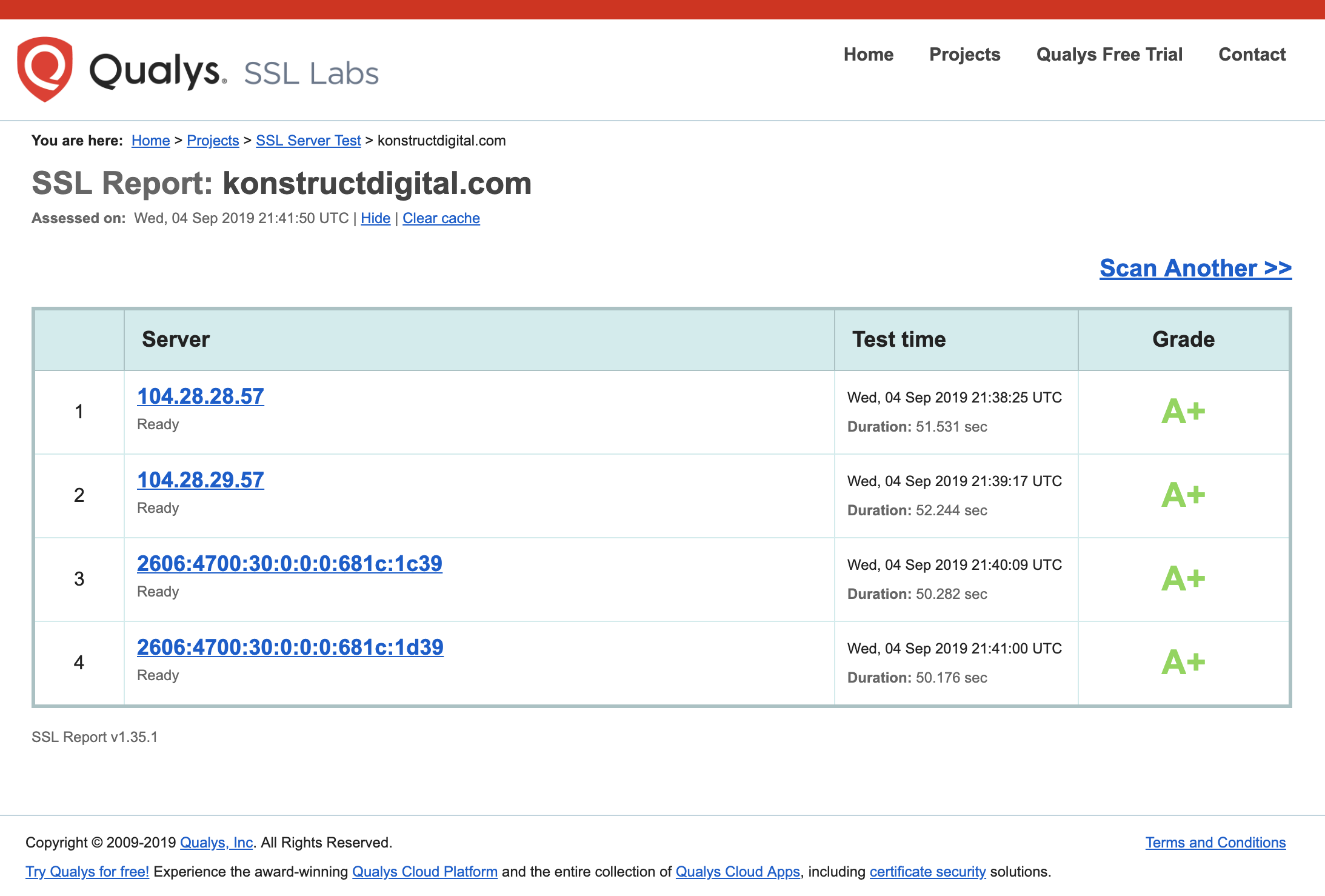
Verifying HSTS is Installed
After you think you’ve enabled HSTS properly, you can visit https://hstspreload.org and https://securityheaders.com/ to verify that HSTS is running. You can also go to https://www.ssllabs.com/ssltest/ to check what your site’s security score is. It also can tell whether your site has HSTS enabled or not. Fun fact: our site is graded A+.
By the way, https://hstspreload.org isn’t only a site to check if HSTS is running, it adds your website to a “preload list”. What this does is your site will be hard-coded as an HTTPS-only site on browsers. So for example, you get a new computer and install Google Chrome on it, Chrome will already recognize your site as an HTTPS site.
There are requirements for preloading your domain however. Here they are:
- Serve a valid certificate
- Redirect HTTP to HTTPS on the same host
- All subdomains must be on HTTPS
- Serve HSTS header on the base domain (This is where you installed HSTS)
Implement HSTS Now
Implementing HSTS on your website only does good for it. You get a 3-in-1 benefit package by simply applying HSTS to your sites. It isn’t hard to do and doesn’t take a lot of time to do it and in an online world where personal data is crucial to keep private, it’s pretty much table stakes.
It’s never been more important to invest in SEM and SEO. Statistics show that search engines drive 93% of all web traffic. If you aren’t found in search engine results or your website isn’t ranking for keywords that are related to your business, you could be missing out on a lot of valuable traffic.
#KonstructDigital #GrowYourBusiness #Search #SEO #SEM
Schema is becoming a more commonly used term in SEO circles, but not everyone understands just why it is helpful. Sure you may know that it can help with SEO but how exactly does it do that?
When I think of schema I like to imagine an alien in a department store. The alien has been studying Earth for a while and has a broad understanding of our ways, but has never stepped foot in an earthling store.
When the alien walks around he can, for the most part, identify what he is looking at, but he is undoubtedly going to get lost from time to time, and isn’t going to know what everything is.
Now imagine we were able to give this alien a map of the store and a list of all the items in it, written in his alien language. Now the alien would easily be able to find what his way around and identify everything he is seeing. Heck, he could even guide his alien buddies around if he wanted to.
Let’s assume that this alien is Google and the department store is your website. Google knows websites and ‘their ways’ but every website is like its own little planet. Websites can vary from each other so much and, this means Google sometimes needs to make assumptions in its indexing.
What if there was a better way to explain to Google what certain elements of your website are and the key details it should be taking from these elements?
Good news! There is a way to do this and it is called schema.
Schema is script or markup on a website that can tell Google more about your website and its elements. It can say things like you are a local business and here is what I sell and where I am, or this is a how-to section and here is each individual step you need to know about. It can be used to identify a number of different website elements.
Adding schema to your site is like giving Google a map written in its own alien language.
Local Business Schema
Local business schema is a more niche branch of schema that can help local business websites be found by Google more efficiently.
This type of schema provides Google with information about key properties associated with your business. Local business schema can provide Google with your business name, address, phone number, hours of operation and more, through the schema script or mark up.
This provides Google with this important information in a method that is easily crawlable. If you are relying on Google finding this information in your content it can be missed or miss-categorized. Giving Google important information about your business in a language it prefers makes it easier for Google to find and understand.
Schema’s Affect on Local SEO and NAP (Name, Address, Phone Number)
Local business schema can have an impact on your local SEO and NAP consistency. Ensuring your local business schema information matches your Google Business Listing information can help with your local SEO.
Matching your local business schema information to your Google Business Listing helps Google better associate your website with your listing. Helping Google with this association will improve your local SEO.
Matching your schema and your directory listing information also helps with your NAP consistency. NAP consistency is ensuring that all references to your business across the internet have the exact same information. This means ensuring the same phone number, address and address format, name, etc. are the exact same in all references to your business online.
Better NAP consistency makes it easier for Google to associate all listings to each other thus helping your local SEO. Local business schema plays an important role in this strategy.
How to Build Proper Local Business Schema
There are two methods of implementing local business schema on a website. On is through J-SON script and the other is through microdata. Breaking down the difference between these two is better explained in its own article. When it comes to implementing local business schema I suggest using J-SON script.
When implementing local business schema via J-SON script it allows you to add it to all your website pages by implementing it in the site header. This is much harder to do when using the microdata implementation method. Having local business schema in your site header means all of your website pages can benefit.
Installing Local Business Schema on your Website

Ideally, we want to install local business schema on all of your website pages. This allows Google to identify your key business information regardless of the page it is crawling and indexing.
The best way to implement local business schema sitewide is by installing the local business schema J-SON script in your site header. To do this copy the script and install it before the closing </head> tag in your site header file.
Finding the Proper Schema Type
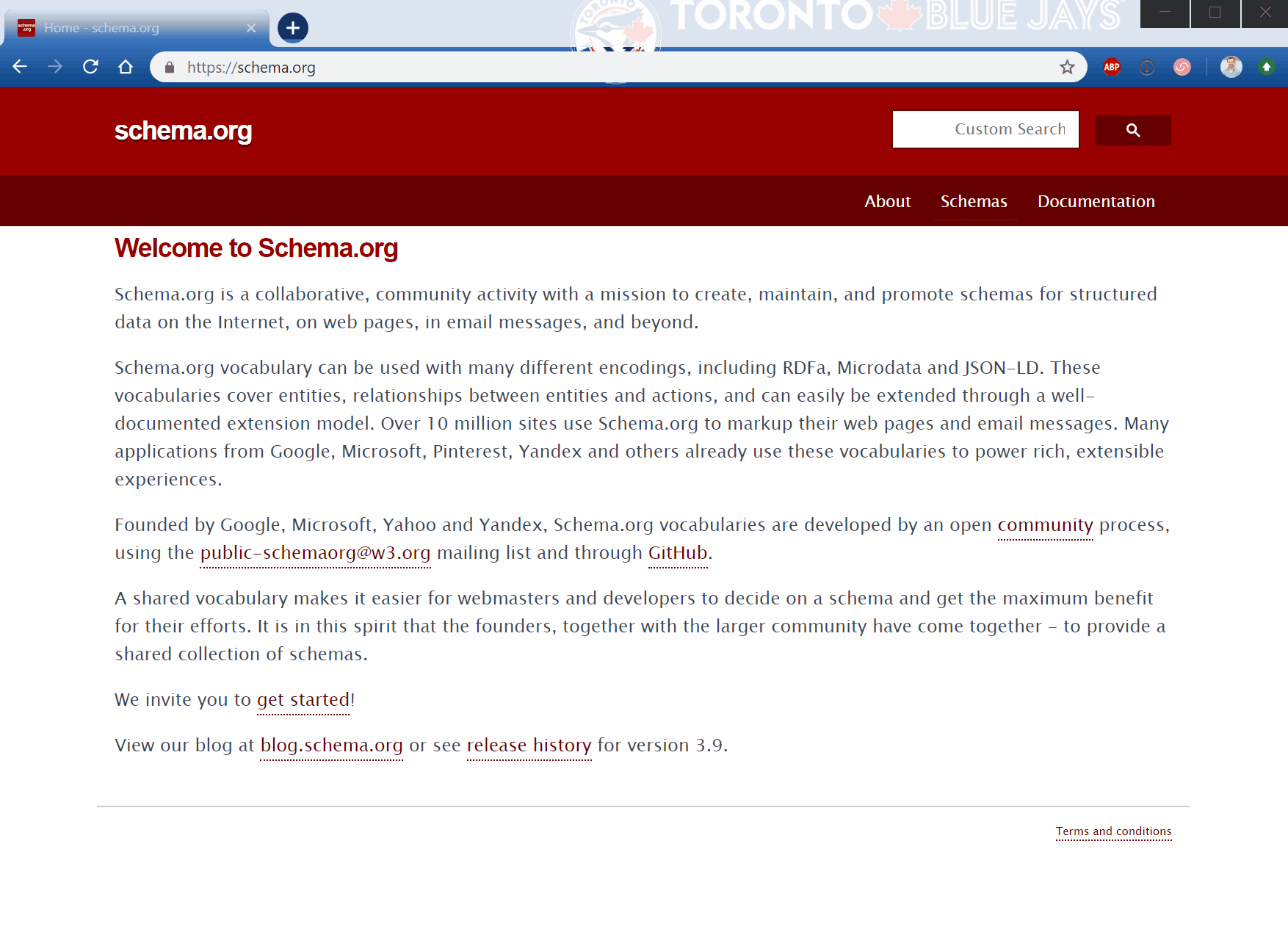
Local business schema in itself is a schema type but there are a variety of subschema types within the local business schema type. Think of it like a series of folders on your desktop, you open a broad folder with more folders in it and when you open the next folder there is a series of folder within that. Every time you open another folder you find more specific information.
When choosing your local business schema type you want to find a schema type that is as specific to your business as possible.
To find the different local business schema types go to https://schema.org/LocalBusiness, at the bottom of the page is a list of more specific local business schema types. From this list choose the type that is most related to your business, but don’t stop there. Each specific local business schema type page has another list of even more specific schema types located at the bottom. Keep choosing from these lists until you find the schema type most related to your business.
Properties that Need to be Included in your Local Business Schema
When building local business schema there are a number of properties that need to be included. These properties are:
- Address – The address of your business
- Description – A description of your business (include keywords important to your business)
- Telephone – Your business phone number
- Name – Your business name
- Image – A URL to your business logo
- Price Range – The range a person may pay when interacting with your business
- Opening Hours – Your business hours of operation
- URL – Your business website URL
- Has Map – A link to the Google Map for your business
- Same As – Links to social profiles associated with your business
What your Local Business Schema J-SON Script should Look Like
Here is an example/template of the J-SON script that should be implemented on your website.
<script type="application/ld+json">
{
"@context": "http://schema.org",
"@type": "EntertainmentBusiness",
"address": {
"@type": "PostalAddress",
"addressLocality": "Calgary",
"addressRegion": "AB",
"postalCode":"T2T 2T2",
"streetAddress": "123 Fake Street"
},
"description": "This is a business that sells goods or offers services",
"telephone": "(403) 222-2222",
"name": "Your Business",
"image": "https://yourbusiness.ca/wp-content/uploads/2019/03/logo.png",
"priceRange": "$10 - $500",
"openingHours": "Mo, Tu, We, Th, Su 10:00-22:00 Fr, Sa 10:00-23:00",
"url": "https://yourbusiness.ca/",
"hasMap": "https://g.page/your-business?share",
"sameAs" : [ "https://www.facebook.com/yourbusiness/, https://www.instagram.com/yourbusiness/"]
}
</script>When using the above template it is important to note that all quotations, commas and brackets should not be changed. If the structure of the schema is changed it can break the script.
How to Properly Test your Schema
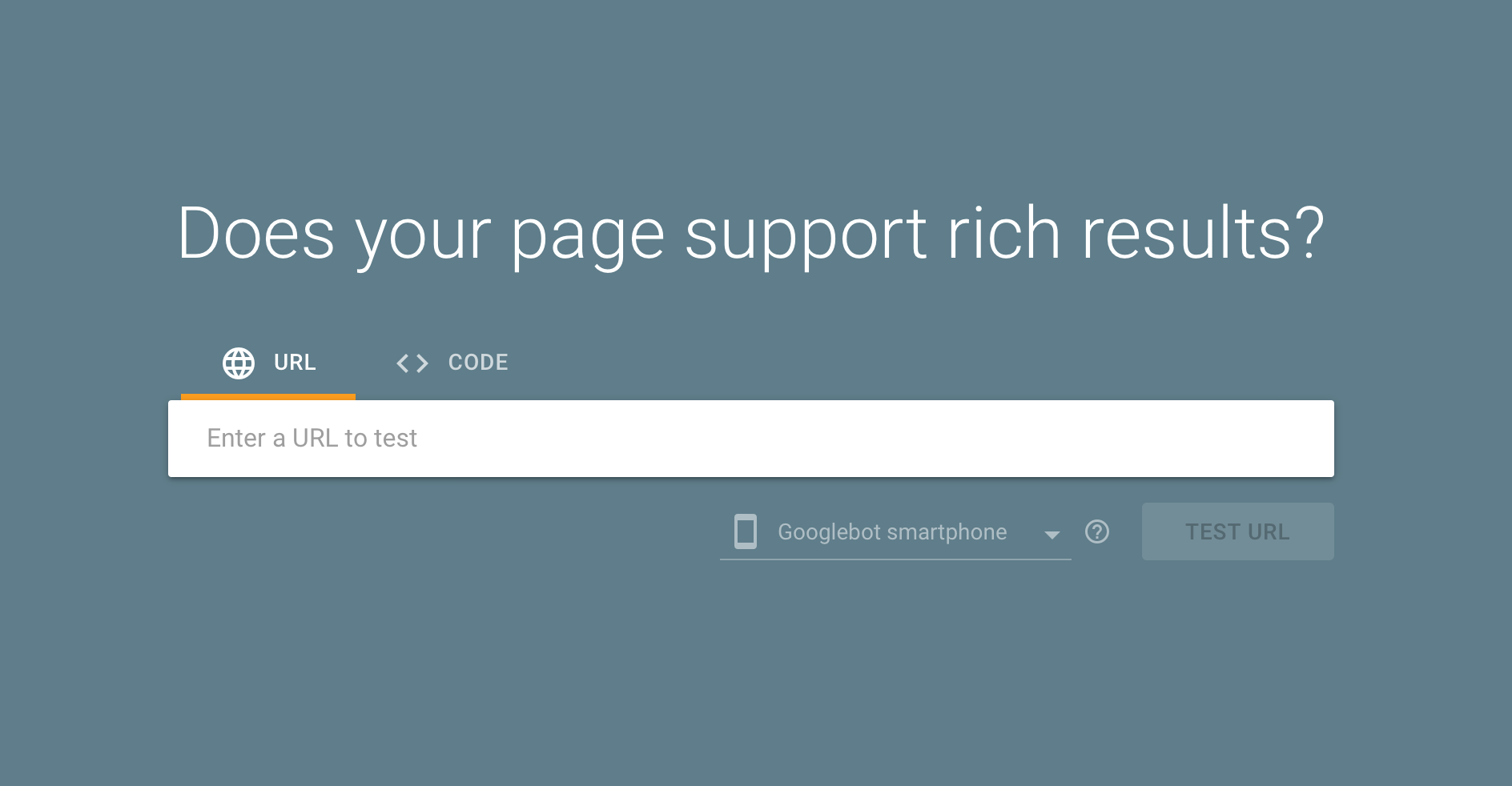
Once you have built your schema you need to test it to make sure it properly relays your information to Google. Broken schema can cause errors and as a result become completely useless.
To test your schema go to https://search.google.com/test/rich-results/. This tool will allow you to test your schema and preview your rich results in two different ways, either by inputting a URL with the schema implemented on it, or testing your script directly by pasting it in the code snippet area.
Once your script has been tested and you have no errors you can move forward with implementing it in your website header.
As discussed previously your local business schema should be installed in your website’s header.
Need Help? We’re Experts
At Konstruct Digital we have an expert team of SEO’s. Our team is experienced in implementing all types of schema on a wide variety of websites. If you need help implementing schema on your website just give us a call.
When it comes to SEO, we need to get into the minds of our customers and figure out how they are searching for information so that we can target the right keywords and topics. Understanding how customers search for information influences your SEO strategy.
The way people search for information online has been changing. Instead of simply searching for a short, concise keyword; more people are asking questions to get the information and answers they are looking for. Gone are the days of simply using regular keywords. Question keywords and long tail keywords are becoming more popular and should be a part of your SEO strategy.
There are a couple of reasons for this. Firstly, Google’s “Answer Box” featured snippet seeks to answer the questions that users are asking in the first page of search results. Users will search their questions because they know that Google will usually answer their questions right away. Secondly, thanks to the use of voice assistants, more people are asking questions to get the information they need. People are asking their voice assistants over a billion questions a month.
According to a study that was published by Moz, search queries beginning with “Who,” “What,” “Where,” “When,” “Why,” and “How,” accounted for 8% of searches being made. Given that there are over two trillion searches made on Google every day, questions make up a large portion of the search traffic that you could be missing out on. It’s well worth your time to optimize your content to use more question keywords.
Why are Question Based Keywords so Important to Search and SEO?
Before we get too carried away, let’s look at the tangible search engine benefits to optimizing your website with question keywords. Part of Google’s algorithm and how they categorize search results comes from Google’s semantic search technology.
If you’re unfamiliar with Semantics, here’s a quick lesson:
Semantics:
se-man-tics | si-’man-tiks
Definition of semantics:
The study of meanings. The historical and psychological study and the classification of changes in the signification of words or forms viewed as factors in linguistic development.
Basically, semantics is the study of language and the true meaning of the words being used. With this, Google works to understand and identify what the intent of the user is and what they are trying to find out. Once Google has this figured out, it presents the search results that it believes is most relevant to what the user is searching for.
Semantic search takes four elements into account when deciding what to display in search results:
- The natural understanding of language or ‘semantics’.
- The context of the user’s search.
- The context of the query stream and how the queries relate to one another.
- Entity recognition to relate topics with one another.
In a nutshell, semantic search is where Google analyzes all of the information above and understands the natural language behind what you’re searching. This enables Google to deliver more relevant search results and help resolve some of those tough to answer questions.
What’s the SEO benefit of answering questions?
Now that we know how semantic search works and how Google seeks to answer people’s questions, we can dig into what happens when a question is asked and how Google knows how to categorize search results.
With the rise of voice search, we’re seeing a shift in the way people are searching. Search queries are taking a longer, more conversational form. These queries form a type of targeted keywords called “long tail keywords”.
Because search is taking a longer form, Google is learning to take what you say and determine the intent behind your question with it’s semantic search technology.
Google knows you’re asking a question whenever a query begins with “Who,” “What,” “Where,” “When,” “Why,” and “How,”. Once Google has determined the search query is a question phrase, the semantics and searching begins.
Now, if you’ve ever asked Google a question before, you may have noticed that the search results look a bit different than they do for a normal keyword. This is where things get interesting.
The Featured Snippet
This is the stuff that SEO marketers dream of. Position zero aka “the featured snippet”. That neat looking panel you see in search results is an excerpt from a website that is answering the question that you searched for.
The real benefit here is that this search result is above the other results and highlighted with it’s own panel. Given that the featured snippet stands out from the rest of the results and sits above the rest (position zero), it’s more likely to be clicked than other results on the same page.

What kind of featured snippets are available?
Depending on what kind of information you have on your website, Google will select the right type of answer box featured snippet for that particular search query. There are three types of featured snippets available depending on the search query and the information available on your website.
Paragraph Featured Snippet
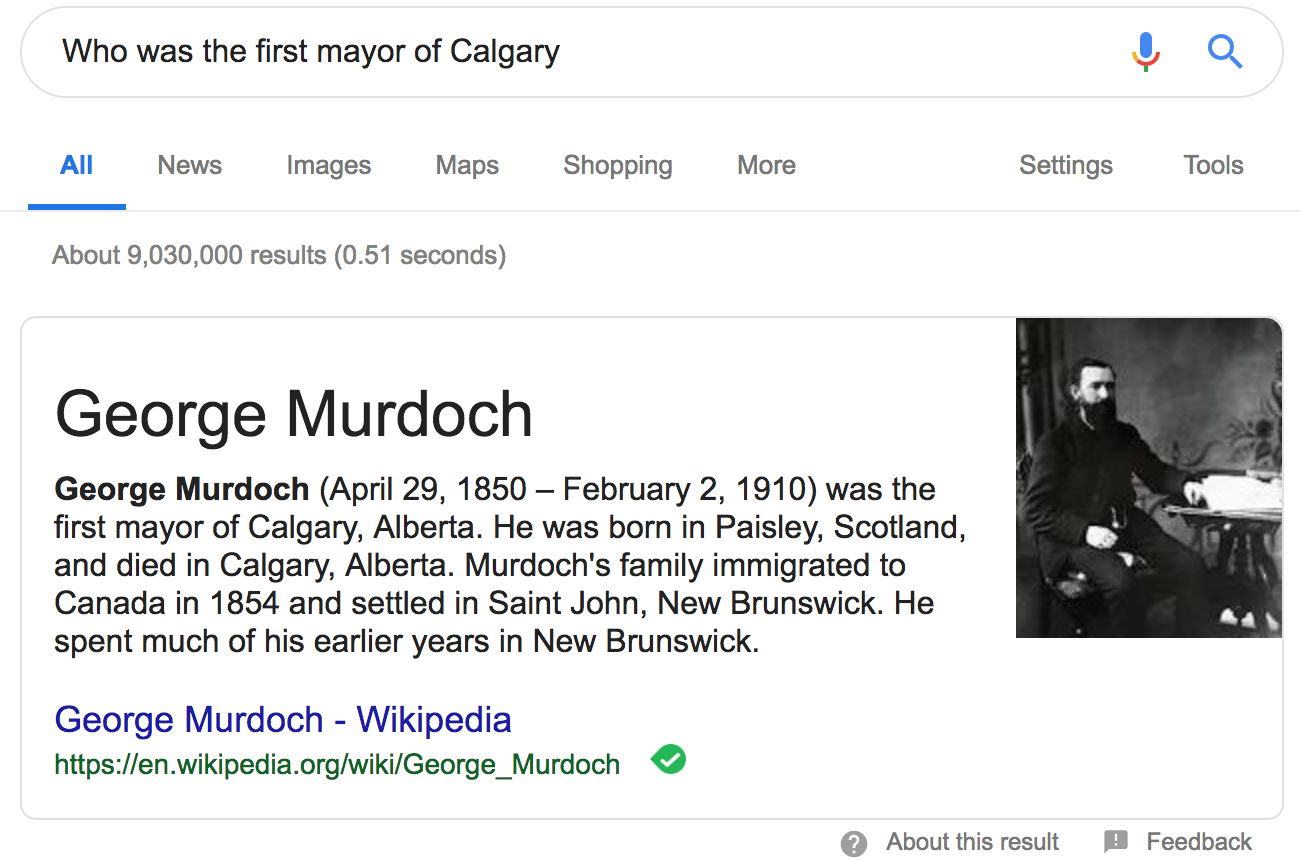
The paragraph snippet is used when the answer to a search question with a text-based answer. This snippet normally takes the form of a box with some text and an image on the inside. For example, searching “Who was the first mayor of Calgary?” will give us search results with a paragraph snippet and a photo of George Murdoch.
List Featured Snippet
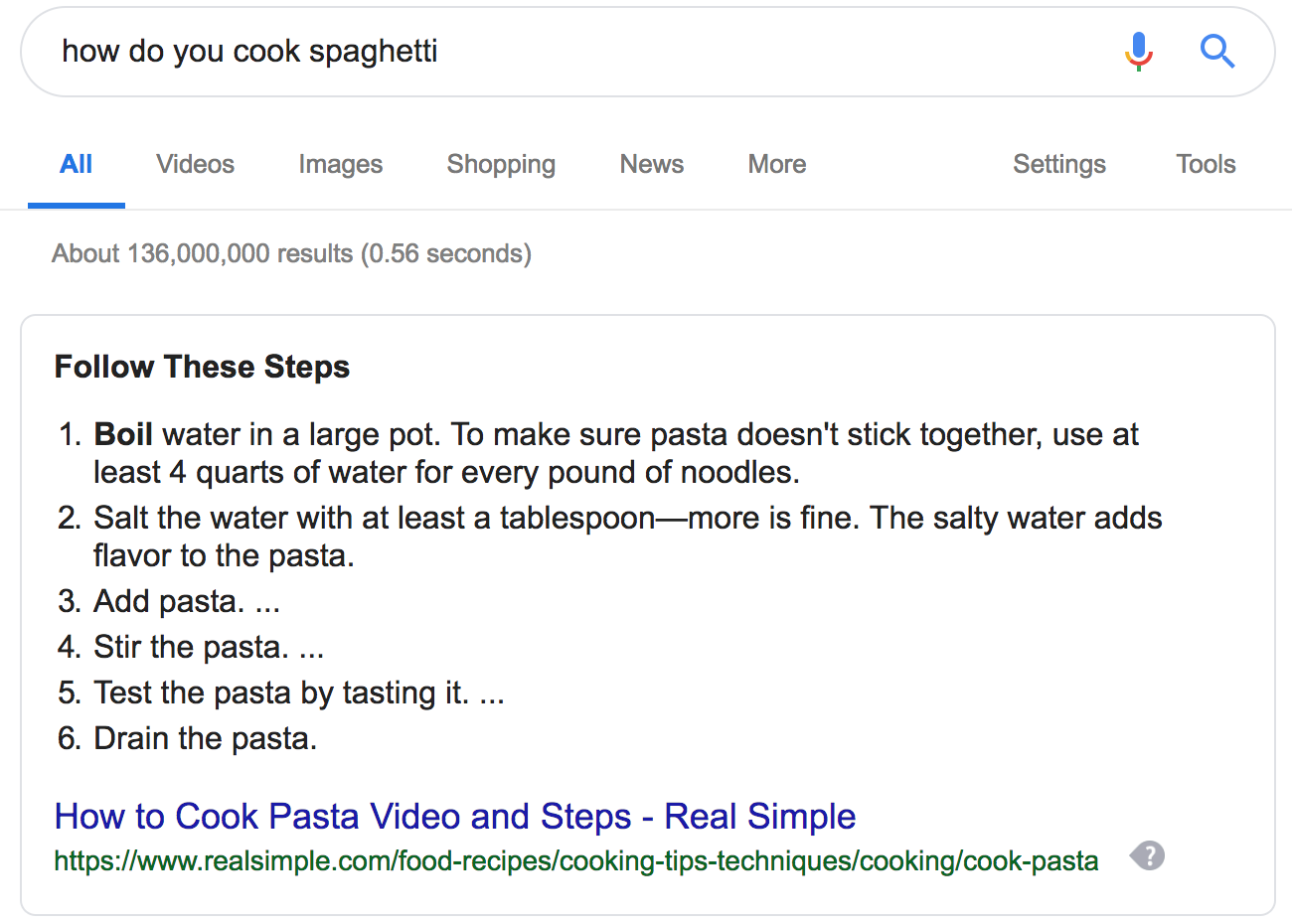
The list snippet is displayed when the answer to a question is in the form of steps or a list. This snippet normally just takes the form of a numbered or bulleted list that will help guide the user through a process. For example, when we search “How do you cook spaghetti?” we get a list of the steps needed to make spaghetti. Pretty handy, right?
Table Featured Snippet
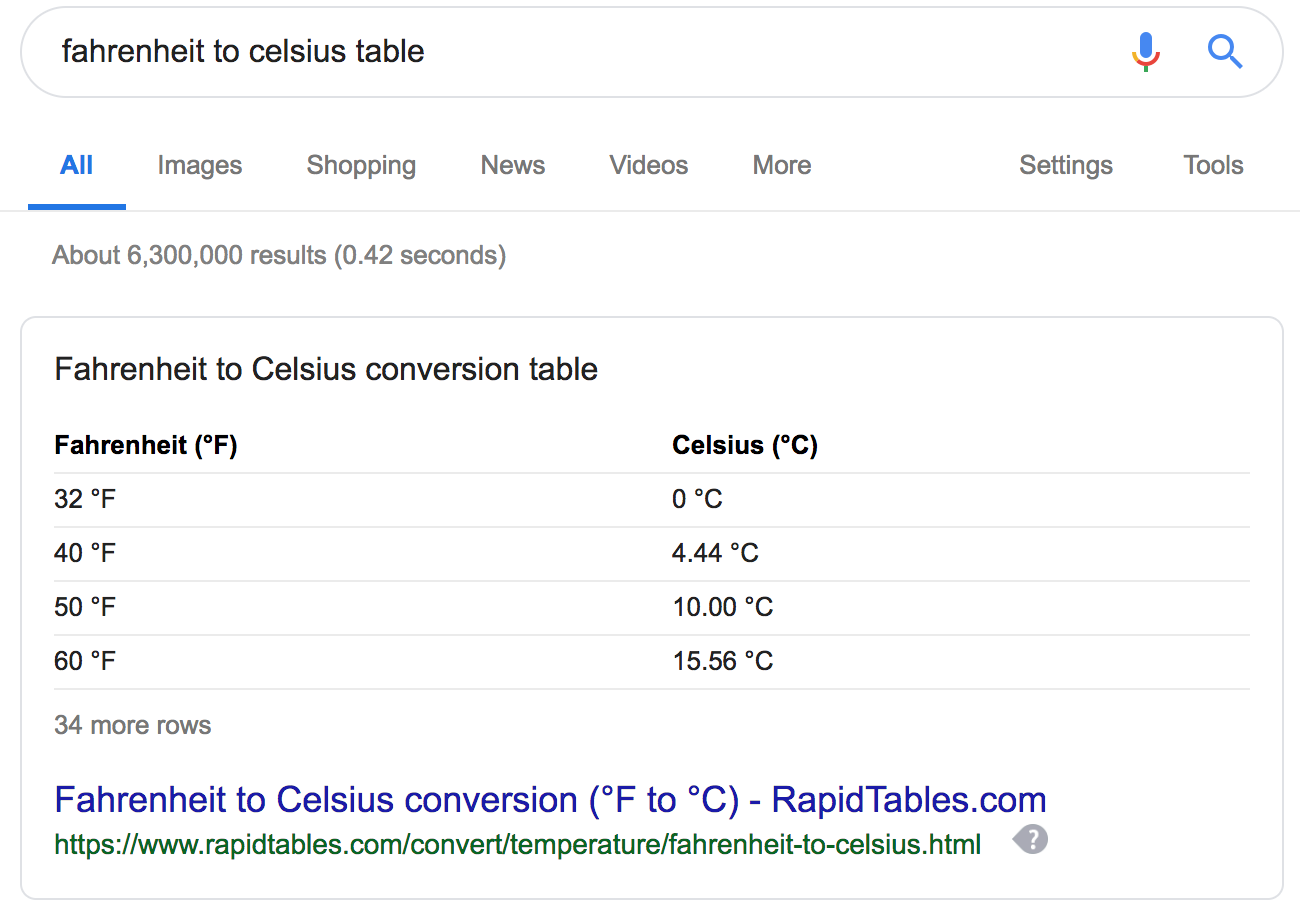
This snippet is displayed when the answer is best displayed in the form of a table. If you ask a question regarding a unit conversion or something similar, you will see a table snippet in your search results. Take this search for a conversion of Fahrenheit to Celsius for example. Google makes it quick and easy to figure out what the temperature is in a measurement we may have a better understanding of.
Why are the featured snippets so important?
It’s easy to see how the featured snippets stand out from regular search results and are more visible than the first regular search result on the page. This is why we call it “position zero”. But, how valuable is a featured snippet to your SEO strategy and overall web traffic?
Studies show an 8% improvement in click-through rate while you hold an answer box featured snippet. To add even more value, revenue from organic traffic that comes from a featured snippet has been shown to increase by 677%. That’s incredible! Marketers have also reported an average 20-30% increase in organic traffic while holding the featured snippet for a search result as well.
If you’re looking to gain a competitive advantage in search results, winning over a featured snippet could be pivotal in improving the results from your SEO campaigns.
How to incorporate Questions and Answers into your content
Now that you understand how Google favours answers to questions that users may be asking, you may be wondering how to go about optimizing your content for questions and answers. Keyword research is an important part of any SEO strategy and there are ways to determine which questions are the most valuable and the most searched by users.
Do some Q&A Keyword Research
Using Google’s Keyword Planner, we can do some keyword research for question based keywords or long tail keywords that have a good amount of monthly search traffic. This will give you some good insights as to what people are searching and asking about.
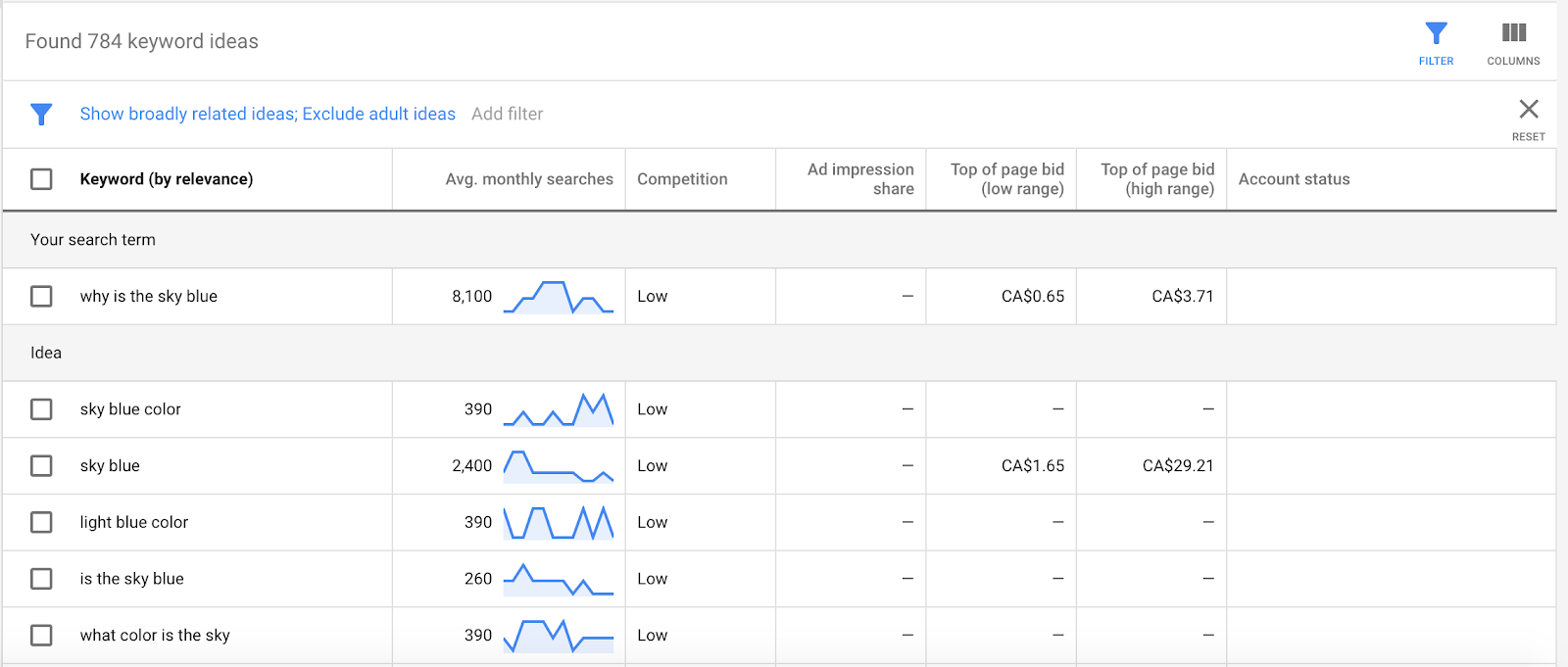
Other methods:
- Harvest commonly asked questions from your sales team, customer support, social media etc
- Other tools E.g. keywordit
Create FAQ or Q&A sections on your website
One of the easiest ways to optimize your content for question keywords is by creating a frequently asked questions (FAQ) or Question and Answer (Q&A) section on your website or integrate FAQs with your landing pages or articles.
Once you’ve had a chance to analyze customer feedback, questions and concerns from the different points of customer contact that your business has, you can begin to craft FAQ or Q&A content for your website to answer those questions. The frequently asked questions you’ve identified will provide value to your customers, combat potential anxieties they may have and provide a good opportunity for you to rank for those question based keywords on Google.
Once you’ve crafted the content for your FAQ or Q&A section, it’s time to integrate the content into your website. Simply create a new page and add the content in a list of questions and answers.
Well, there you have it! If you want to give your SEO campaigns a competitive edge, it’s worth taking the time to optimize your content for question based keywords. Providing value to your customers by answering those tough questions and winning over some of the valuable featured snippets available can be a strong way to generate leads for your business. For all of your SEO and content related needs, Konstruct Digital is here to help.
